Don’t miss the Sefton Bivouac Track in Aoraki/Mount Cook National Park. This guide is your ticket to navigating one of New Zealand’s top hikes, packed with must-know tips and insights
Summiting the Sefton Bivouac Track in Mount Cook National Park ranks right up there in my top three all-time best hikes. Seriously, if you’re planning your own adventure there, this one’s a must-do.
In this complete guide to tackling the Sefton Bivouac Track, I’m laying it all out for you: how to get there, what gear you’ll need, and some key tips to ensure your adventure is both thrilling and safe amidst the jaw-dropping vistas of Mount Cook National Park.
Welcome to your next adventure!
Disclosure
Some links in my content may be affiliates, which means that I get a small percentage cut of the sale, if you end up buying something. This helps me keep the site going. Thank you for your support!
Sefton Bivouac Track Details
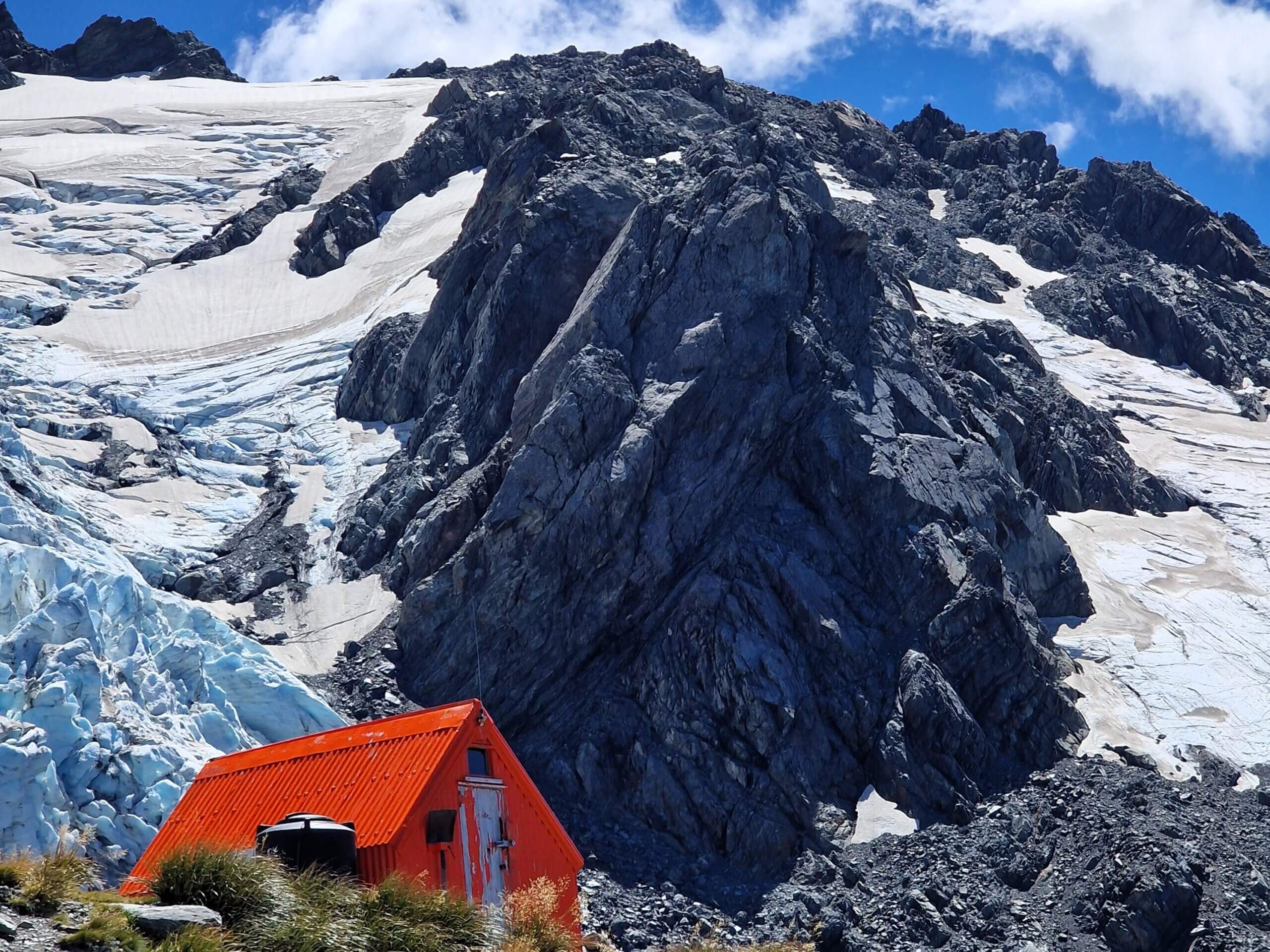
Trail Overview
- Location: Aoraki/Mount Cook National Park, South Island, New Zealand
- Starting Point: White Horse Hill Campground
- Distance: Approximately 5.5 kilometers one way
- Elevation Gain: Around 1,100 meters
- Duration: 3 to 5 hours one way
- Difficulty: Challenging
- Best Time to Hike: Late spring to early autumn (November to April)
Trail Description
Perched at 1,650 meters, Sefton Bivouac sits right below The Footstool, a striking mountain on the Southern Alps’ main divide. This spot offers killer views of the surrounding peaks and the impressive ice cliffs of Te Waewae Glacier—a true haven for climbers and hikers alike.
The Journey Begins
The Sefton Bivouac Track kicks off at White Horse Hill Campground. From there, it’s a steep climb right off the bat through lush alpine greenery. The trail isn’t marked, so you’ll need to rely on your instincts and a good map. As you climb higher, the greenery thins out, giving way to rocky, uneven terrain.
Midway and Beyond
About halfway up, you’ll hit a series of switchbacks. Here, you get teased with glimpses of the stunning Mueller Glacier. The track gets steeper and rougher, demanding your full attention and some solid footing.
The final stretch is a tough scramble over rocky outcrops, but every bit of sweat is worth it when you’re greeted with those jaw-dropping alpine views at the top.
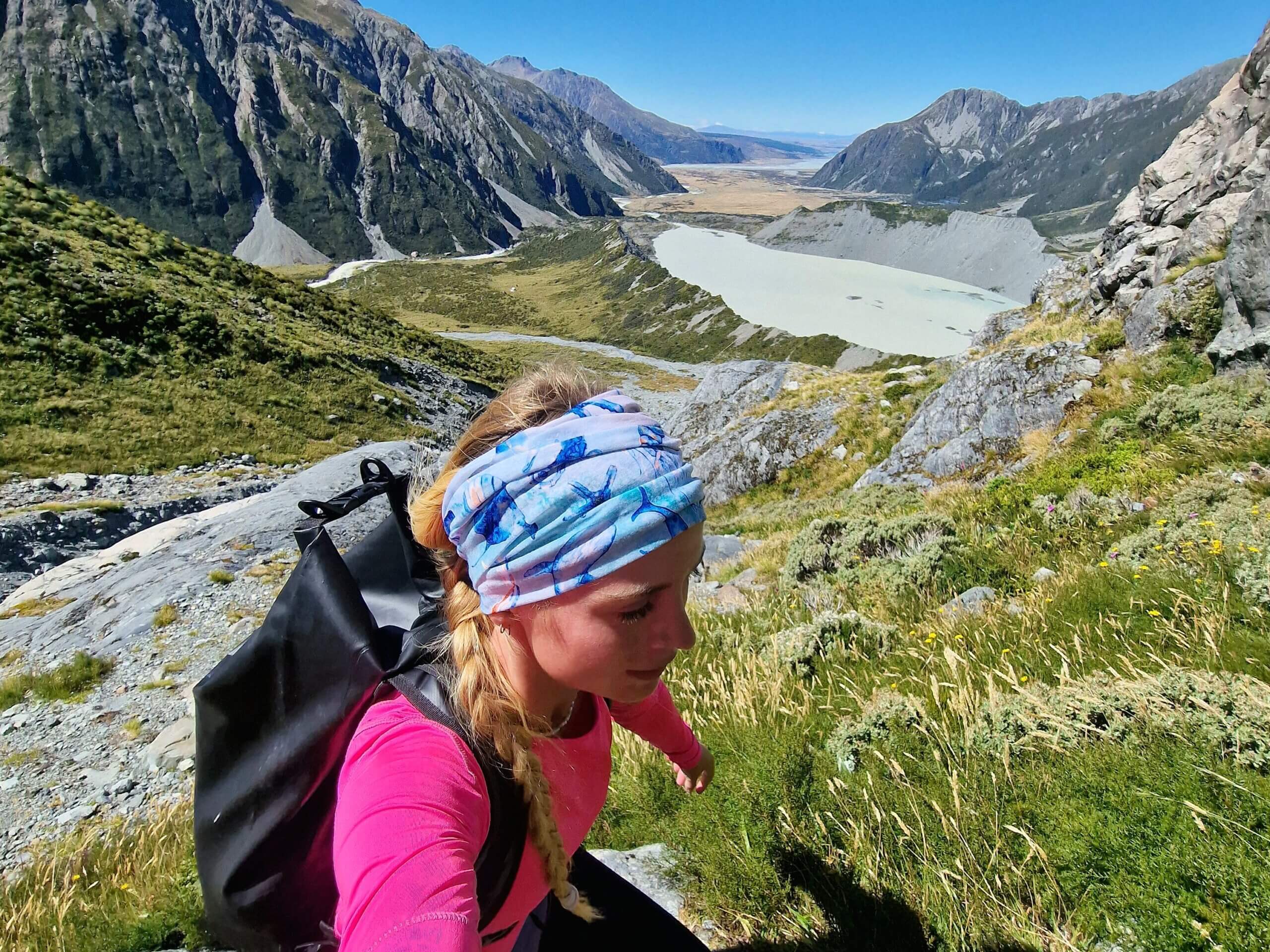
Sefton Bivouac Description
Sefton Bivouac is a significant landmark in Aoraki/Mount Cook National Park. It’s the oldest hut still chilling in its original spot, and the oldest building in the whole park. It has been a vital shelter for generations of climbers, embodying the spirit of adventure and resilience.
Features and Facilities
- Sleeping Arrangements: The bivouac is equipped with four mattresses, providing basic but essential comfort for overnight stays.
- Booking: No bookings are required for Sefton Bivouac, and it’s free. It operates on a first-come, first-served basis, so be prepared to share the space with fellow adventurers.
- Water Supply: Water is available from a tap at the bivouac, but it is not treated. It is advisable to bring your own water purification tablets or a filtration system.
- Toilet Facilities: There is an open-air, self-contained toilet known as a Denali 400 near the bivouac. This setup consists of a toilet seat on top of a large tank. During snowy conditions, visitors are recommended to bring a compostable bag and a poo pot or poo tube to transport waste.
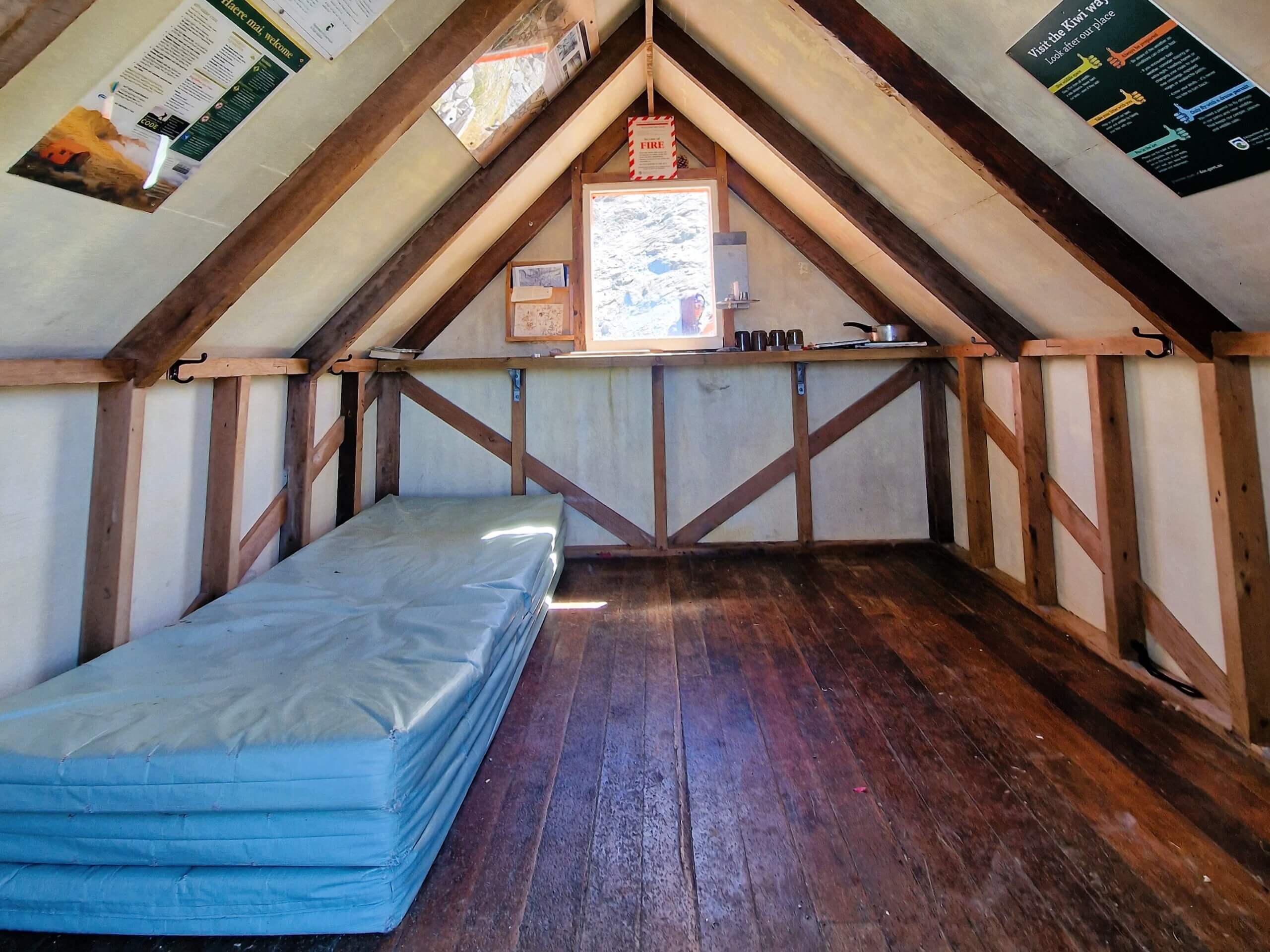
Highlights
- Panoramic Views: Experience spectacular views of Mount Sefton, The Footstool, and the expansive Mueller Glacier.
- Alpine Flora: Observe unique alpine plants and possibly spot native wildlife such as Kea (alpine parrot).
- Sefton Bivvy: Reach the historic Sefton Bivouac a basic shelter used by climbers, offering a great spot to rest and enjoy the surroundings.
- Adventure: This hike is not for the faint-hearted. It’s a proper adventure, requiring your attention and intuition, but oh, it’s so worth it! What an adventure.
Essential Tips
- Preparation: Carry enough food, water, and warm clothing. Weather can change rapidly in alpine environments.
- Navigation: Bring a map and compass or a GPS device. The trail is unmarked, and can be even more obscured in poor weather.
- Fitness: Ensure you have a good level of fitness due to the steep and challenging nature of the track.
- Early Start: Begin your hike early in the day to allow ample time for the return journey and to avoid afternoon weather changes.
Safety Precautions
- Weather Check: Always check the weather forecast before setting out. Avoid the hike if severe weather is predicted.
- Inform Others: Let someone know your hiking plans and expected return time.
- Gear: Wear sturdy hiking boots with good grip, and consider bringing a personal locator beacon (PLB) for emergencies.
- Stay on Track: Stick to the trail to avoid getting lost or encountering unstable terrain.
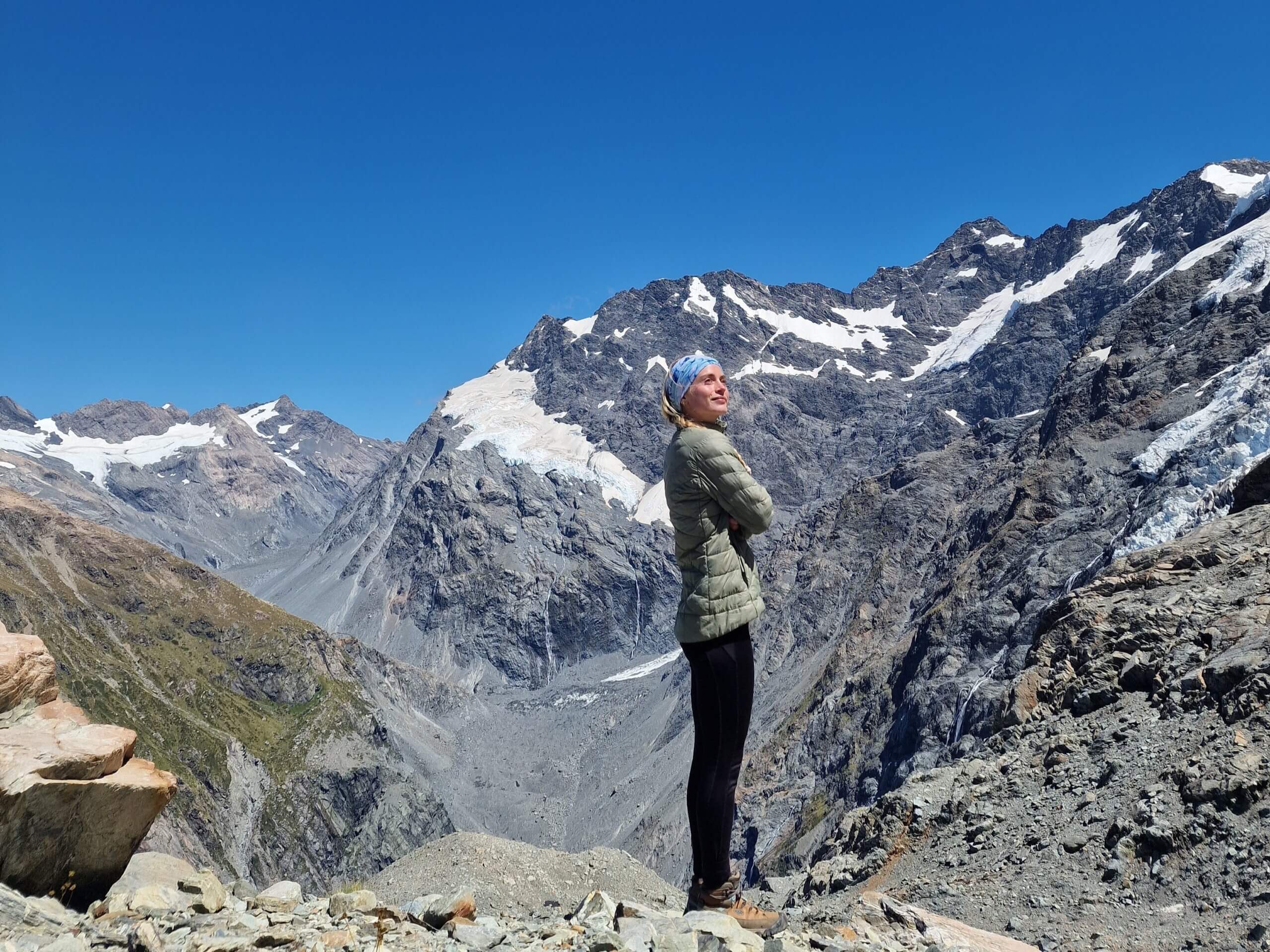
Other Hikes in Mount Cook National Park
- Hooker Valley Track: A relatively easy walk offering spectacular views of Aoraki/Mount Cook and the Hooker Glacier. It’s a great option for a less strenuous hike, and you can even find group tours from Queenstown. I combined the Sefton Bivouac Track and Hooker Valley Track, and ticked them both off on the same day – head to Adding Hooker Valley Track of this blog post for details on how to do this.
- Mueller Hut Route: Another challenging hike leading to the Mueller Hut, providing panoramic views of the surrounding peaks and glaciers.
- Kea Point Track: A shorter walk that leads to a lookout point with excellent views of Mount Sefton and the Mueller Glacier.
- Tasman Glacier View Track: Offers impressive views of the Tasman Glacier and its terminal lake, a perfect short hike for stunning scenery.
Getting There
Aim your compass towards Mount Cook National Park, and drive up the iconic Mount Cook Road, a ribbon of asphalt that slices through jaw-dropping scenery. Whether you’re behind the wheel, sticking out your thumb, or riding a bus, getting there is part of the adventure.
By Car
Driving to Mount Cook National Park is the way to go if you’ve got wheels. From Christchurch, it’s a good 4-hour drive through some of the South Island’s most stunning landscapes. The road to Mount Cook winds past the turquoise waters of Lake Tekapo and Lake Pukaki, the Southern Alps standing sentinel in the distance. As you approach, those mountains get bigger, meaner, and more magnificent.
Once you hit State Highway 80, you’ll feel it—the sense that you’re heading somewhere special. The drive along the shores of Lake Pukaki, with Aoraki/Mount Cook rising in the background, is the kind of scene that makes you pull over just to stare. Keep your eyes on the road, though; the journey is just getting started.
For hassle-free car rentals in New Zealand, look no further than DiscoverCars. Enjoy flexible pickup and drop-off locations, excellent customer service, and the freedom to explore New Zealand at your own pace.
Hitchhiking
If you’re hitchhiking, welcome to the club of budget-savvy, adventure-hungry travelers. New Zealand is hitchhiker-friendly, and the route to Mount Cook is no exception. Start from Christchurch or Queenstown, find a spot on the outskirts of town where cars can safely pull over, and stick out your thumb. You’ll likely meet fellow travelers and friendly locals who are more than happy to share a ride.
The beauty of hitchhiking is the stories you collect along the way. You might find yourself riding shotgun with a local farmer, a fellow hiker, or a family on holiday. Each ride brings you a bit closer to the park, with each driver sharing their own tales of the road.
Please use your judgment and hitchhike at your own risk.
Public Transport
If you’re relying on public transport, your best bet is to catch a bus. InterCity runs routes from Christchurch, Queenstown, and other major towns to Mount Cook Village.
You can also get off at Twizel, the nearest town to Mount Cook Village, but from here you’ll need to hop on a shuttle, a taxi or hitchhike to cover the last stretch to the park.
It’s not the quickest route, but it’s reliable, and you’ll be surrounded by other travelers on their own quests for adventure.
Other Means
Feeling a bit more adventurous? Some opt to bike the scenic route to Mount Cook, turning the journey into a multi-day expedition of its own. It’s a grueling but rewarding option, with plenty of spots to camp along the way. You’ll earn every inch of that stunning landscape, feeling every climb and descent in your bones.
Once you arrive at Mount Cook Village, make your way to the White Horse Hill Campground. This is your launchpad, the starting line for the epic trek to Sefton Bivvy. Exploit the public bathrooms, fill up your water bottles, and take a moment to breathe in that fresh alpine air. Then, lace up your boots, because the real adventure is about to begin.
Are you enjoying my content?
Please consider supporting me by buying me a cup of coffee, or a pizza! 🙂
Adding Hooker Valley Track
The Hooker Valley Track is one of the most popular and scenic hikes in Aoraki/Mount Cook National Park. But let’s be honest, it’s pretty boring if you’re actually into hiking. So why not combine this track with the Sefton Bivouac Track in one day to create a more adventurous and fulfilling experience?
That’s exactly what I did during my time in Mount Cook National Park, and I’m so glad I did. For me, it would’ve been a bit of an unfulfilling experience just doing Hooker Valley Track due to its easy nature. Adding Sefton Bivouac Track gave me a proper adventure and the opportunity to get away from the crowds while truly immersing myself in the wild.
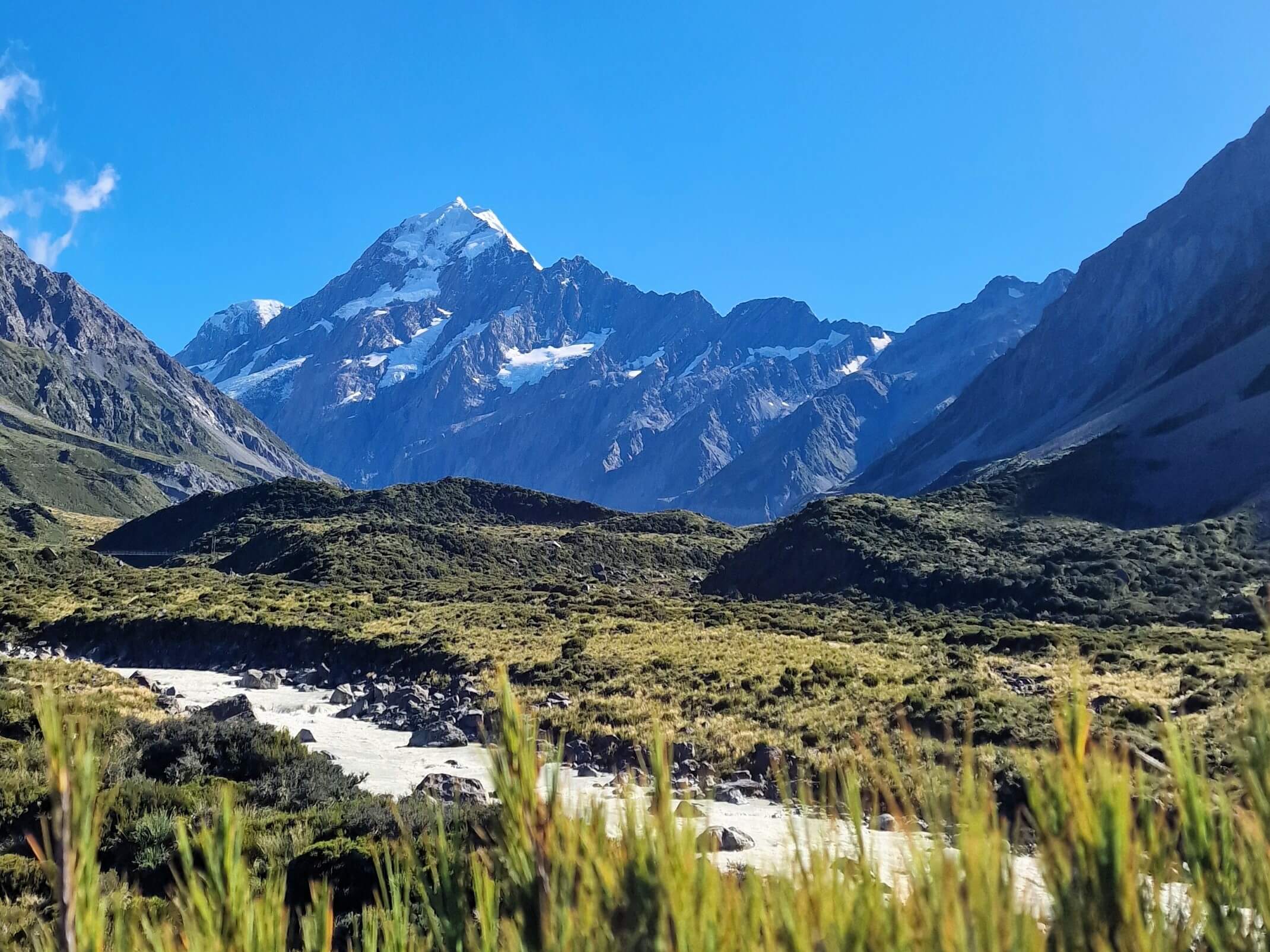
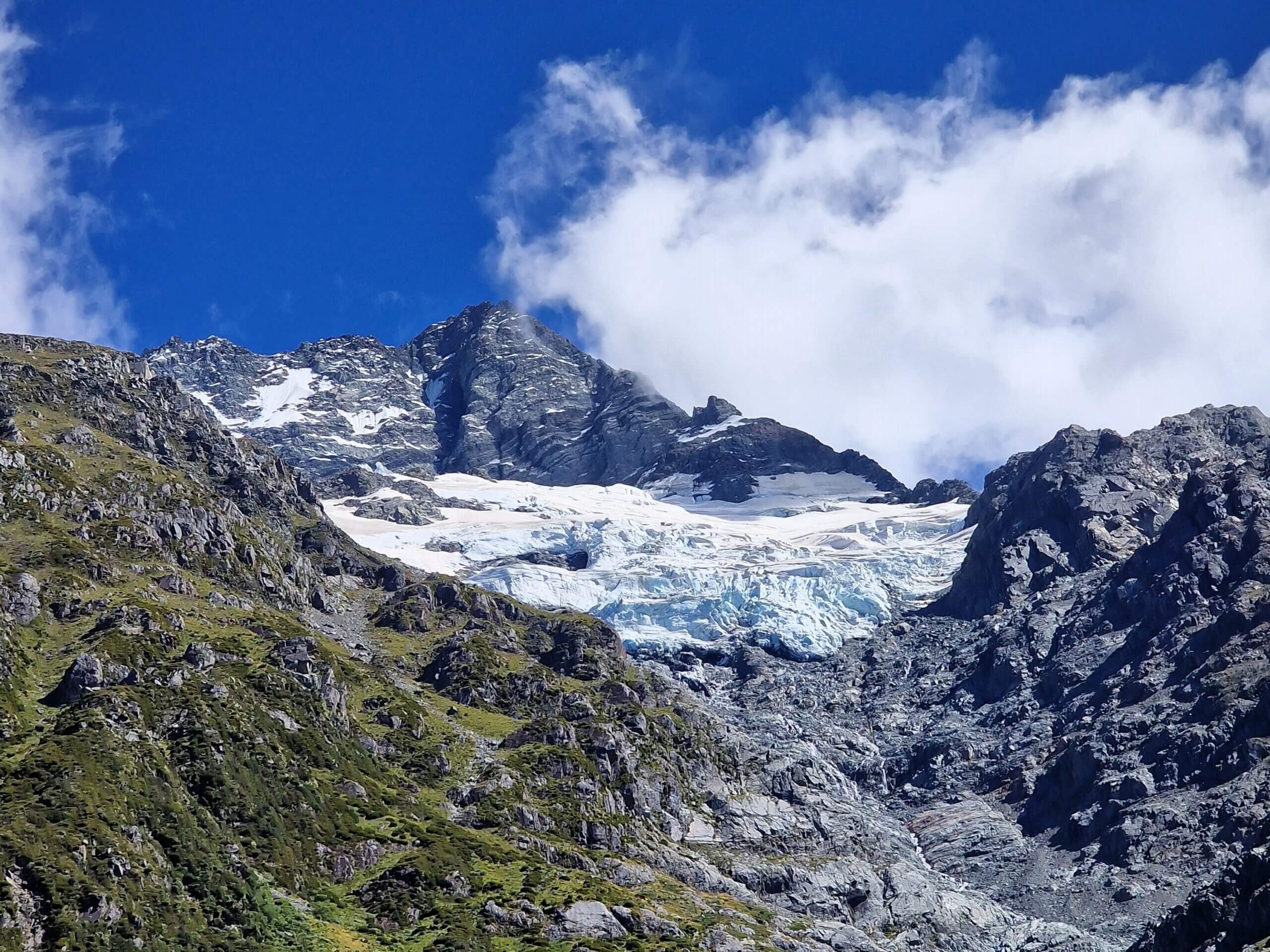
I did the Hooker Valley Track first and then added Sefton Bivvy on the way back. If I were to do it again, I would probably do it in reverse order, starting with the toughest hike and ending with the easy walk.
My step count from the day of completing both hikes were at 21.15 kilometers, and it took me 8 hours from starting at the car park till I reached the car park again.
Here are some details about the Hooker Valley Track:
Hooker Valley Track Details
- Distance: Approximately 10 kilometers (round trip)
- Elevation Gain: Minimal, mostly flat with some gentle inclines
- Duration: 3 to 4 hours (round trip)
- Difficulty: Easy to moderate
- Starting Point: White Horse Hill Campground (same as Sefton Bivouac Track)
- Highlights:
- Swing Bridges: Cross three picturesque swing bridges over the Hooker River.
- Scenic Views: Enjoy breathtaking views of Aoraki/Mount Cook, Mueller Glacier Lake, and Hooker Lake.
- Alpine Scenery: Walk through lush alpine meadows with a backdrop of towering peaks.
- End Point: The track culminates at the stunning Hooker Lake, often dotted with icebergs.
Combining Hooker Valley Track with Sefton Bivouac Track
For those seeking a more adventurous day, it is possible to combine both the Sefton Bivouac and Hooker Valley Track into a single day of hiking. Here’s how you can plan your day:
- Length: My step count recorded 21.15 kilometers for the day, doing both hikes.
- Duration: 8 hours — I started at 9 am and was back at the car park by 5 pm.
- Early Start: Begin your day early to ensure you have ample daylight for both hikes. Start with the more challenging Sefton Bivouac Track would be a wise choice.
- Sefton Bivouac Track:
- Description: Start at the White Horse Hill Campground and hike up to Sefton Bivouac. Enjoy the stunning alpine views and take a short rest and lunch stop at the bivouac before descending.
- Hooker Valley Track:
- Description: Continue on the Hooker Valley Track after descending, which is relatively flat and easier compared to the Sefton Bivouac Track. Enjoy the swing bridges, alpine scenery, and the serene Hooker Lake at the end of the track.
- Finish Strong: Return to the campground, bask in the day’s glory, and maybe crack open a cold one to celebrate.
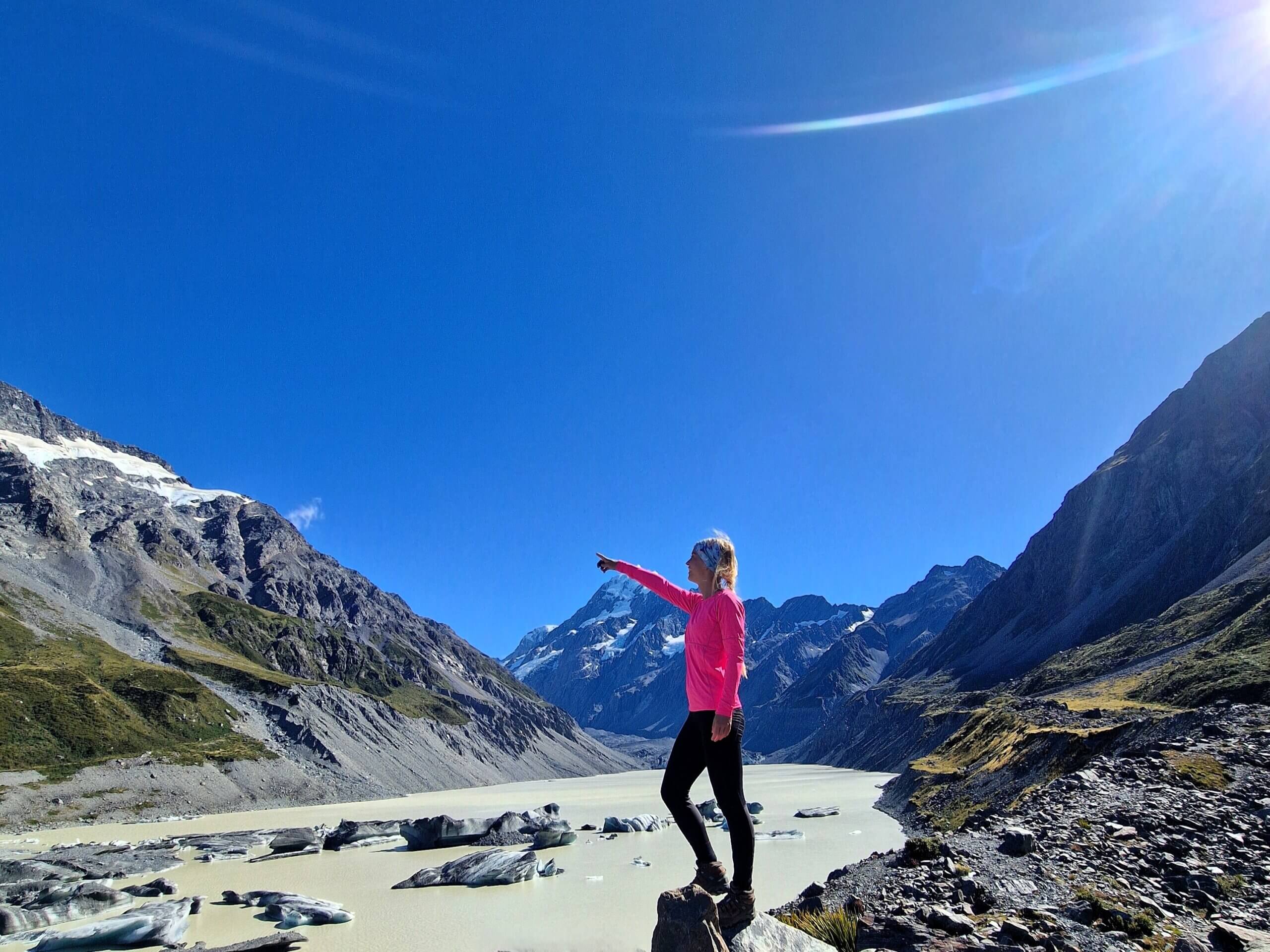
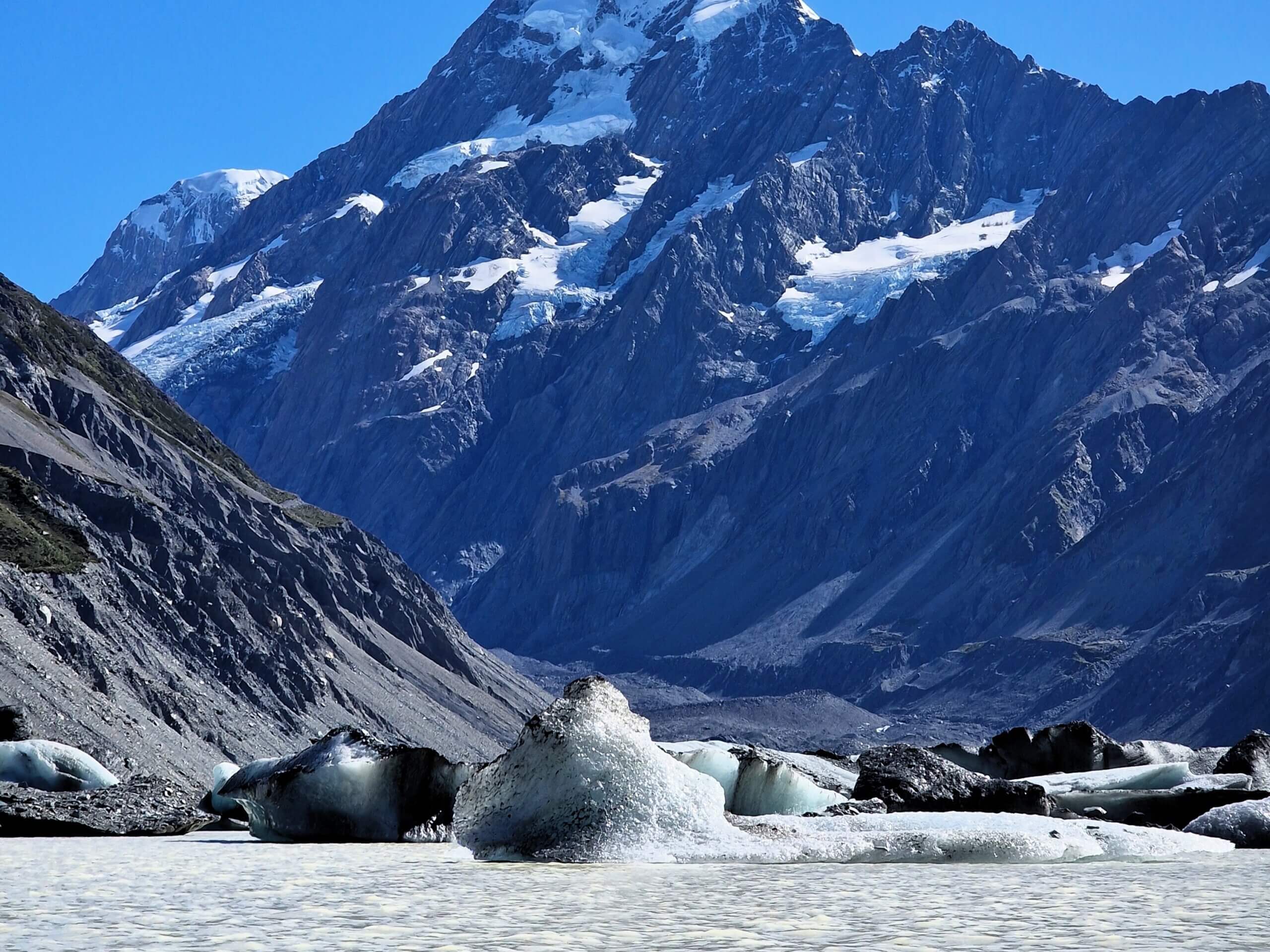
Tips for Combining Both Hikes
- Fitness Level: Be ready for a physically demanding day. Good fitness is key.
- Time Management: Keep a steady pace and manage your time to avoid getting caught out after dark.
- Hydration and Nutrition: Carry plenty of water and high-energy snacks to keep you fueled throughout the day.
- Weather Check: Always check the weather forecast before setting out, and be prepared for changing conditions.
- Rest and Recovery: Take short breaks as needed, and listen to your body to avoid overexertion.
Built to Last: The Historic Sefton Bivouac of Mount Cook
Sefton Bivouac, affectionately known as “Sefton Bivvy,” is steeped in the rich mountaineering heritage of Aoraki/Mount Cook National Park. This iconic spot stands as a tribute to the adventurous souls of early climbers and remains a crucial refuge for today’s hikers and mountaineers.
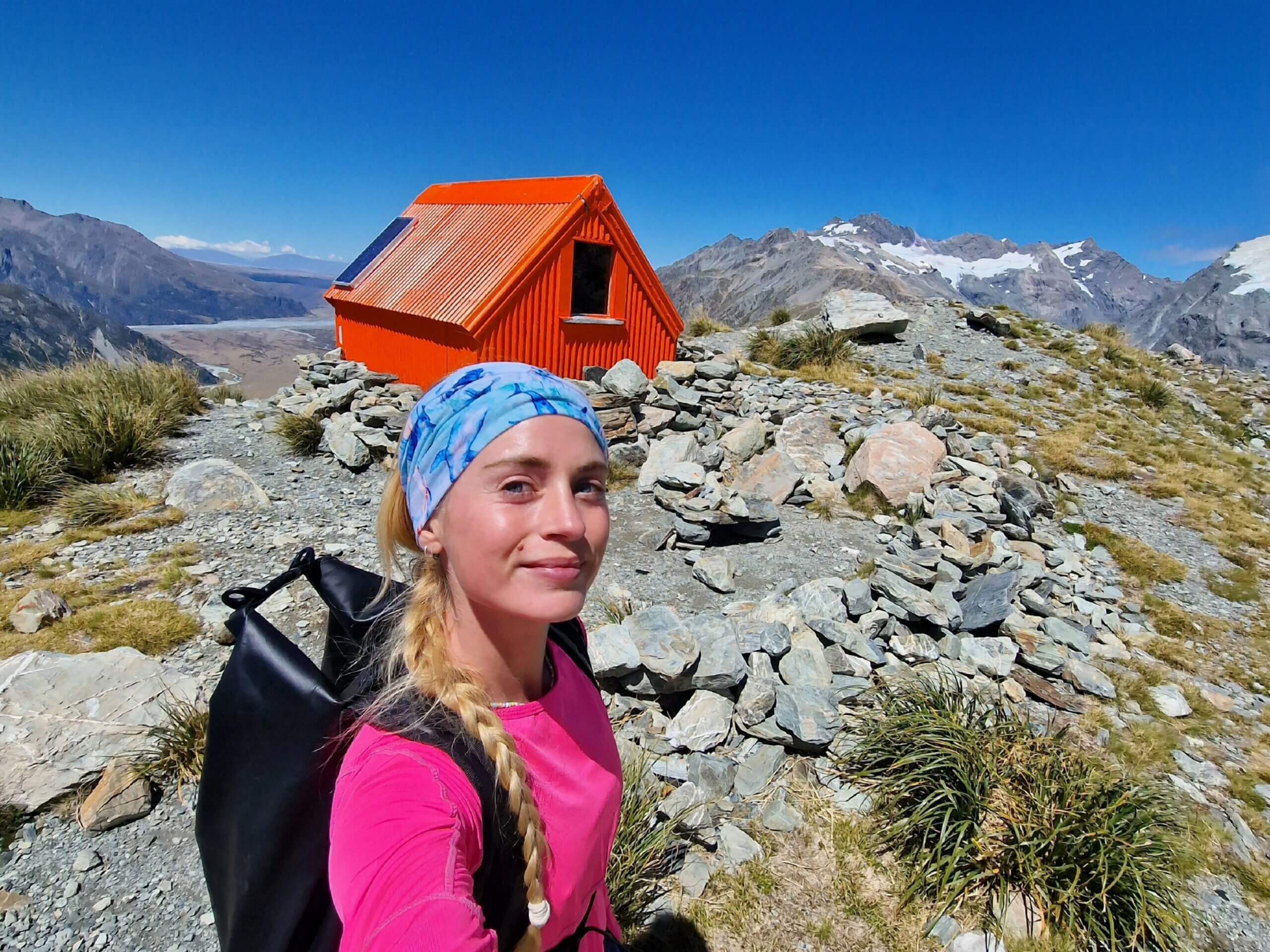
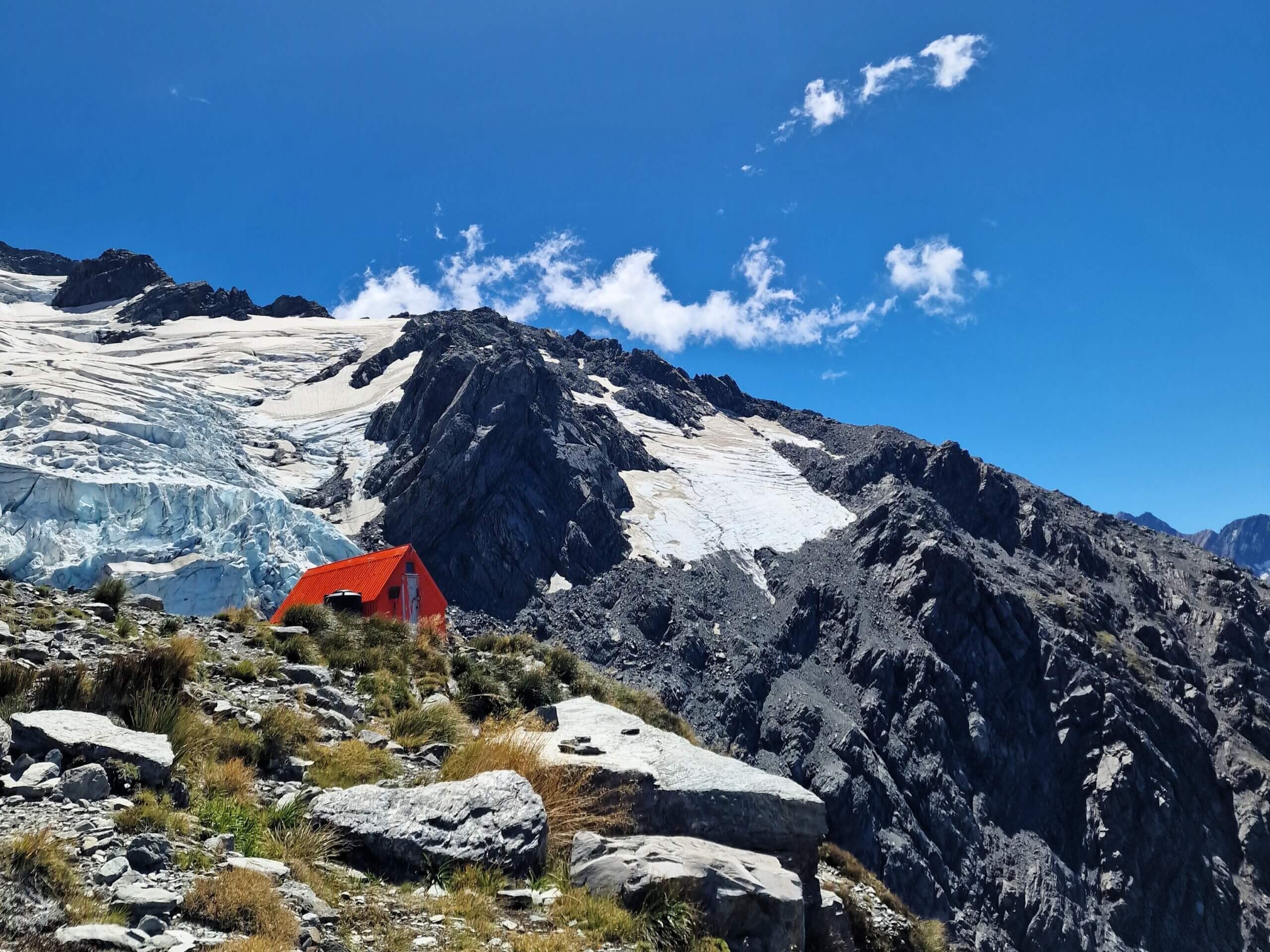
Origins and Early Use
Sefton Bivouac was set up in the early 20th century to help climbers tackle the beastly peaks of the Southern Alps, especially Mount Sefton (3,157 meters). Named after this towering giant, the bivvy offered much-needed shelter in the unforgiving alpine wilderness. Back then, climbers would throw together temporary shelters, but as more folks flocked to the area, a permanent structure became a no-brainer.
Historical Background
The brainchild of Peter Graham, Aoraki/Mount Cook’s chief guide, Sefton Bivouac came to life in the early 1900s. Graham saw the need for a sturdy shelter to aid climbs of Mount Sefton and the Footstool. So, they lugged materials up to the site on their backs and assembled the hut right there above the Te Waewae Glacier.
Construction and Features
The original Sefton Bivouac was a no-frills, practical hut designed to withstand the harsh alpine elements. Over the years, the Department of Conservation (DOC) and local mountaineering clubs have kept it in shape. Today’s bivvy is still pretty basic but solid, with a few bunks, simple cooking facilities, and minimal insulation to keep out the chill.
Challenges and Durability
Not long after it was built, heavy snow took a toll on the bivvy. But they patched it up, and it’s stood the test of time since then. Its simple, robust design has helped it weather the harsh conditions, continuing to offer shelter to climbers and hikers to this day.
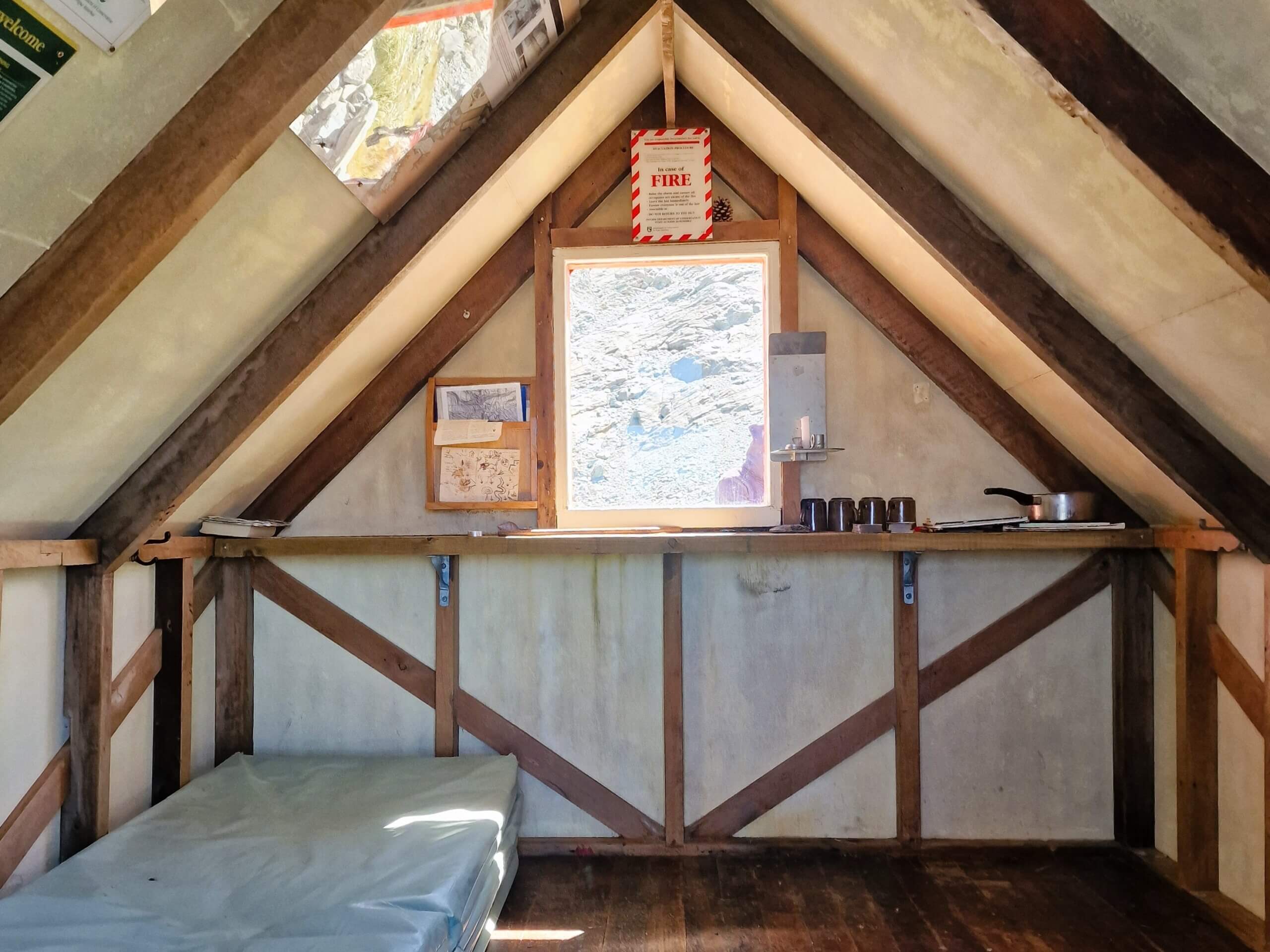
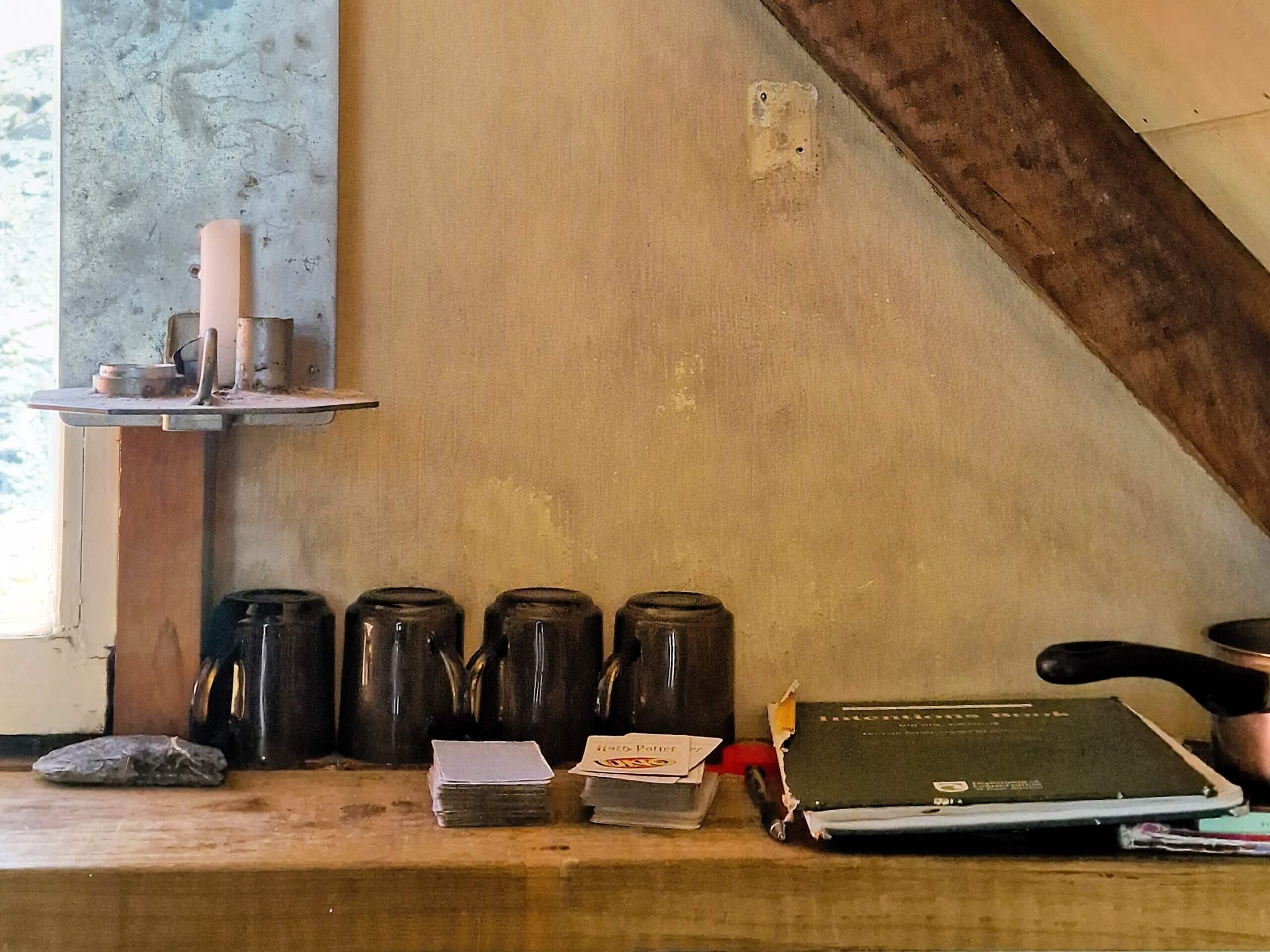
Role in Mountaineering
Sefton Bivouac has been a pivotal player in New Zealand’s mountaineering saga. It’s been a base for climbers taking on Mount Sefton, The Footstool, and other nearby peaks. The bivvy’s strategic spot lets climbers acclimatize and prep for their ascents without trekking back down to the valley every day.
Modern-Day Importance
Nowadays, Sefton Bivouac is still a key destination for climbers and hikers. While it primarily supports alpine ascents, it’s also a popular hiking goal thanks to the challenging trail and jaw-dropping views. The bivvy is a symbol of New Zealand’s enduring mountaineering culture and the commitment to preserving access to these wild places.
Anecdotes and Legacy
Many climbers and hikers who have visited Sefton Bivouac share stories of their experiences, contributing to the bivouac’s rich oral history. Tales of challenging weather, breathtaking sunrises, and the camaraderie of fellow adventurers add to the bivouac’s mystique and allure. These stories, passed down through generations, reinforce the sense of community and shared purpose among those who venture into the high mountains.
My Experience
Chasing Snowy Peaks
I did a lot of good hikes during my time on New Zealand’s South Island, but Sefton Bivvy? Hands down, one of the best. Here’s how it went.
Driving up Mount Cook Road towards the National Park, I was already gobsmacked. The first snowy peaks came into view, and I lost it. It was so stunning it felt unreal. Every cell in my body quivered with excitement for the day’s adventures, and that wasn’t just the coffee talking.
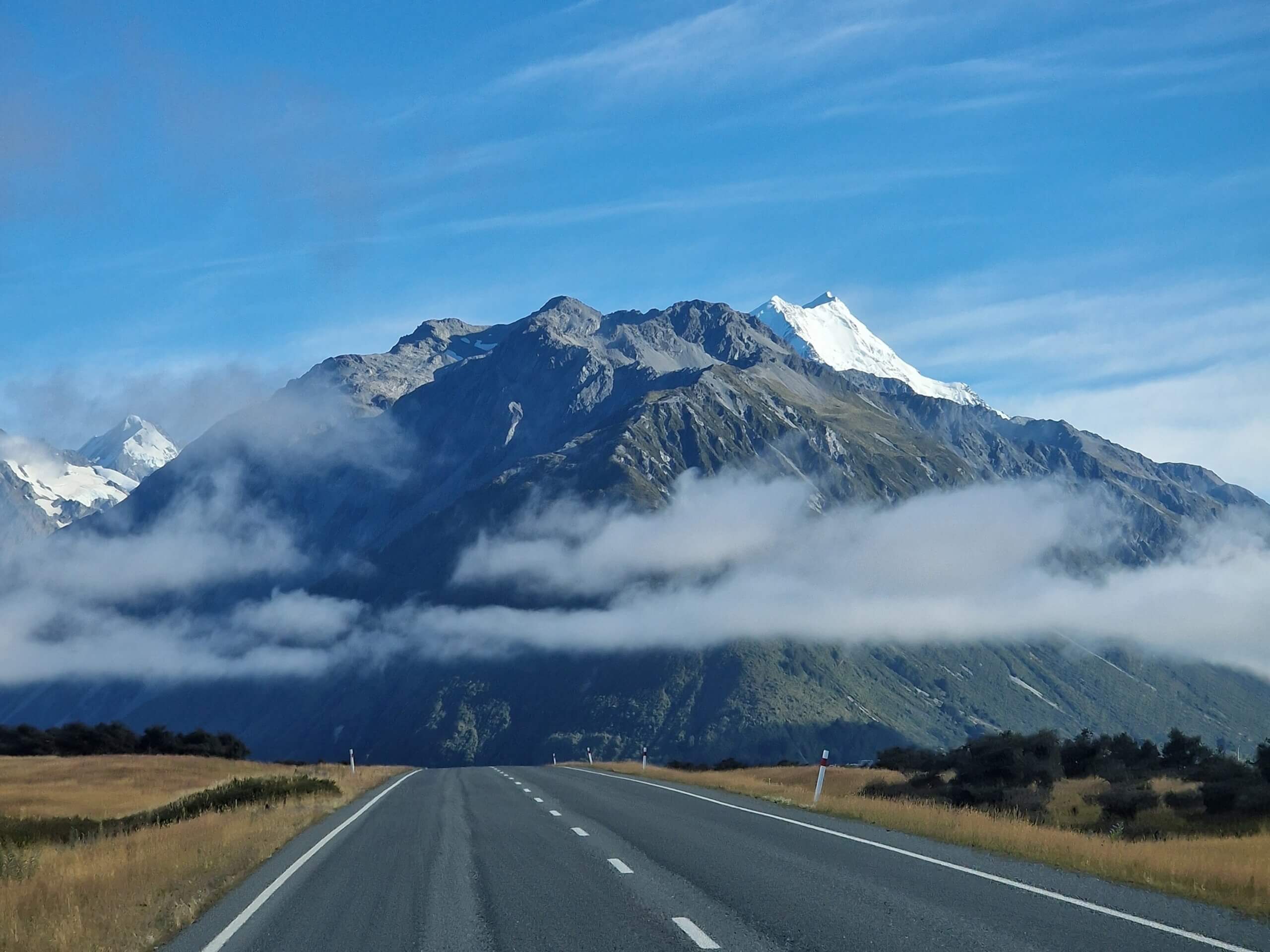
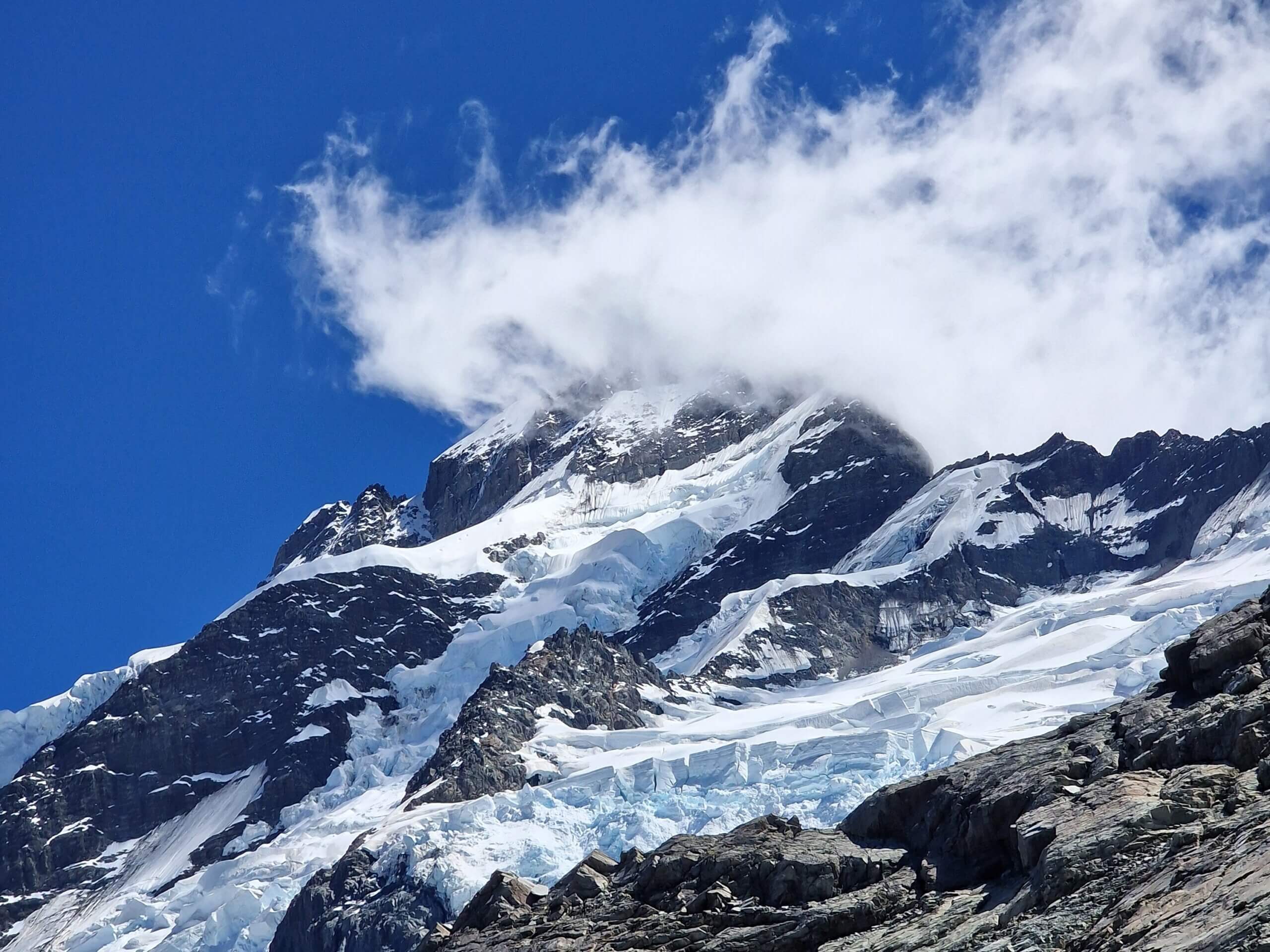
My travel buddy Jakub and I had camped on the other side of Lake Tekapo at some free spot. We woke up at 6 am, aiming for an early start, but we were already behind schedule. We made a pit stop in the little township of Twizel to fuel up on hash browns and strong coffee. Now we were finally on the road, about to have one hell of an adventure. We just didn’t know it yet.
Hooker Valley Warm-Up
Arriving at the White Horse Hill Campground car park, we did what any self-respecting slum backpackers would do: exploited the public bathrooms to brush our teeth and loaded up our water stash. Then we set out on the Hooker Valley Track.
It was a brisk morning, and the chill in the air pushed us to move fast, chasing that sweet body heat. We flew past most of the crowd as the sun slowly crept higher in the sky. But in our haste, we totally missed the little side route to the Sefton Bivouac Track.
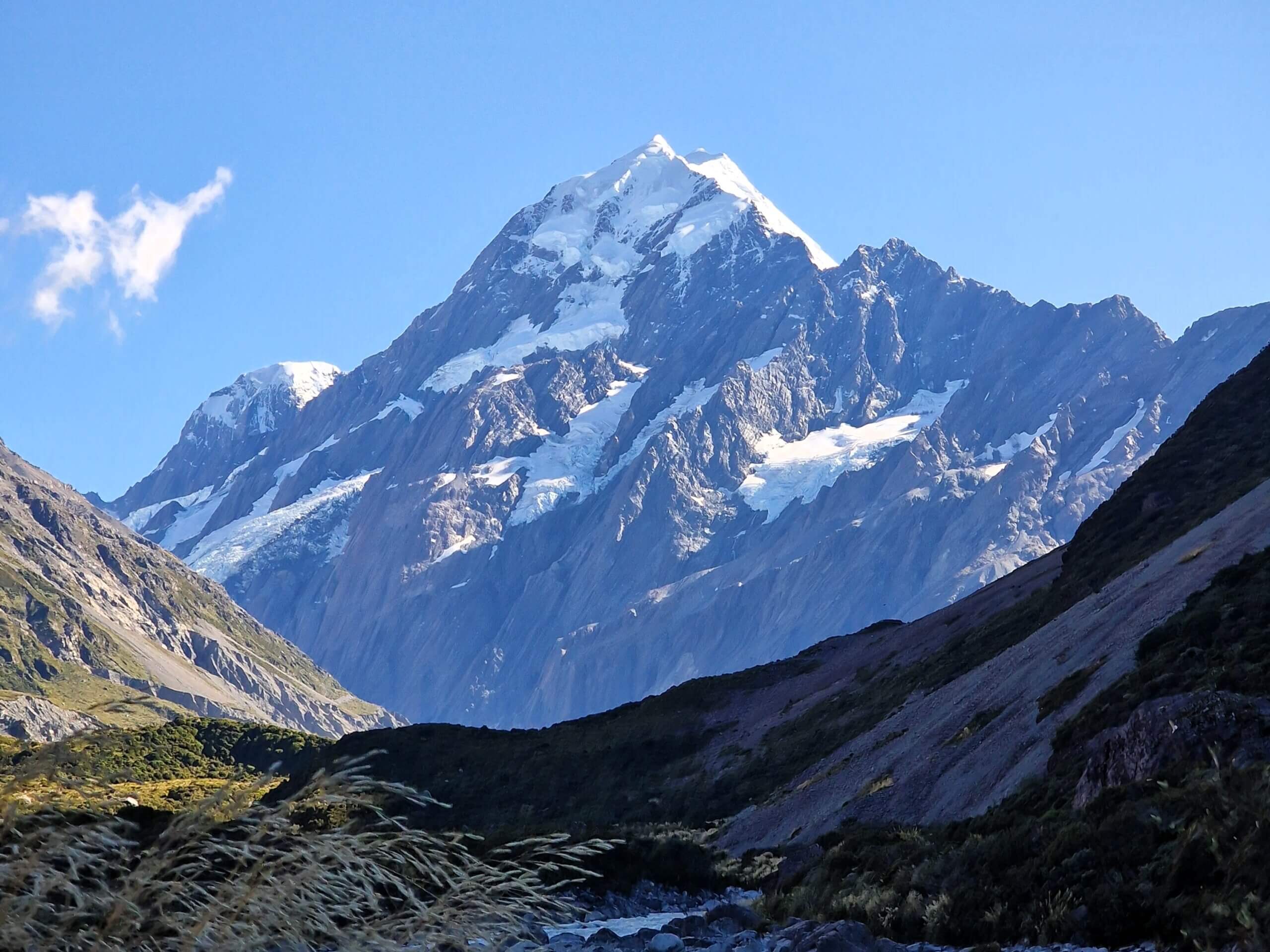
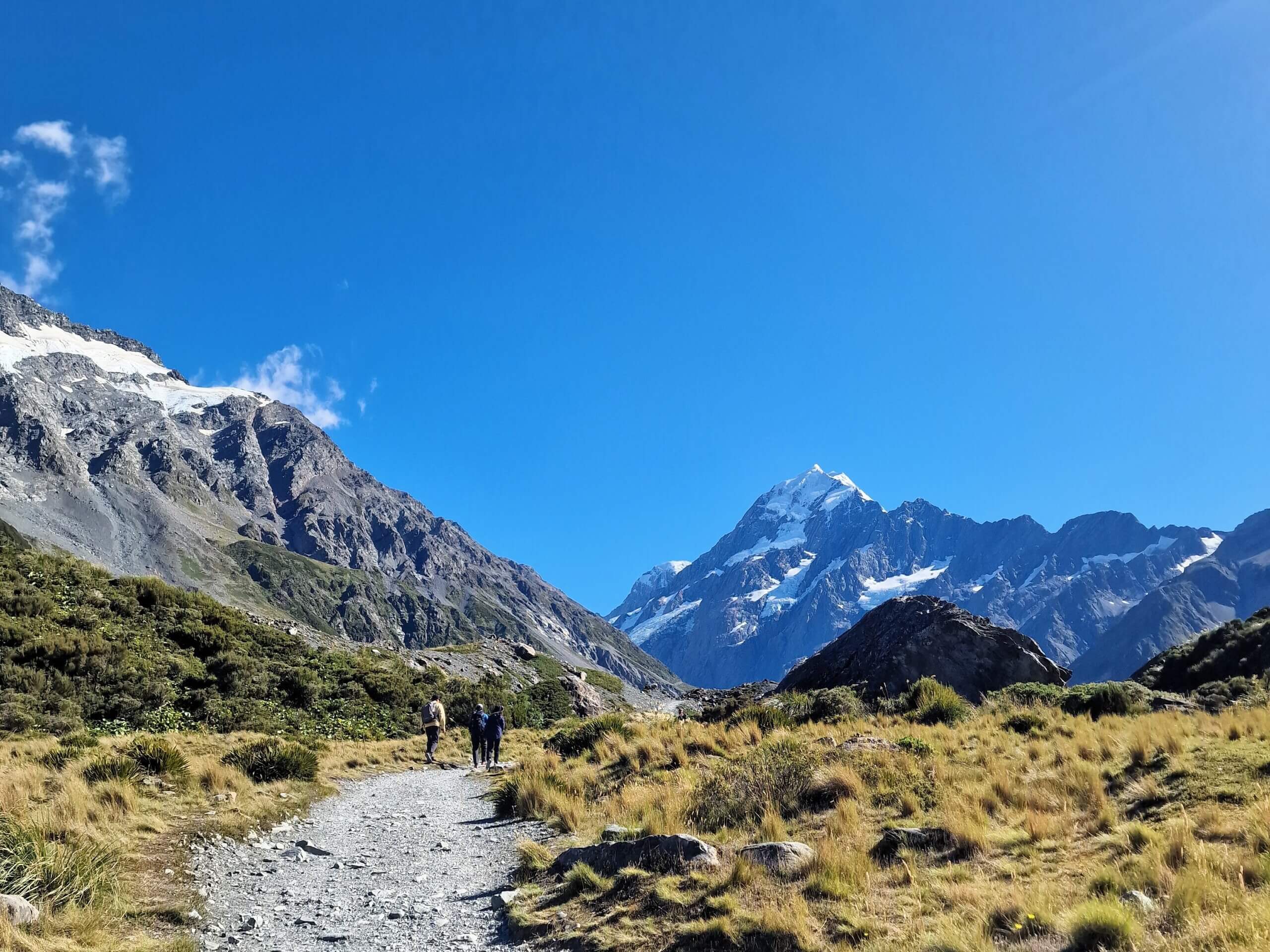
“Well, f**k that,” I scuffed. We’d just knock out the Hooker Valley Track first.
And so we did. As expected, the track was a breeze, so I was glad we had something more challenging lined up. Hooker Lake was packed, with people lounging at picnic tables and snapping photos in their trendy gear, while Jakub and I looked like a couple of proper hobos.
We smashed a few snacks, snapped a few photos and set off to conquer the real track — Sefton Bivouac Track.
Into The Wild
This time, we didn’t miss the track up to Sefton Bivvy. In a heartbeat, we were off the well-trodden tourist path and into the wild. This was where the adventure began.
Jakub and I tried to follow the map, but we ended up scrambling over rocks and leaping across streams, with no clear path in sight. We were lost for a while, but we kept pushing forward, steadily climbing.
Eventually, about a third of the way up, we stumbled onto a trail that had been trodden before and followed it. The track quickly got thrilling—exposed, steep, and demanding. I paused for a moment to take in the views. Standing on a narrow path with a big drop in front of me, it was equal parts exciting and terrifying.

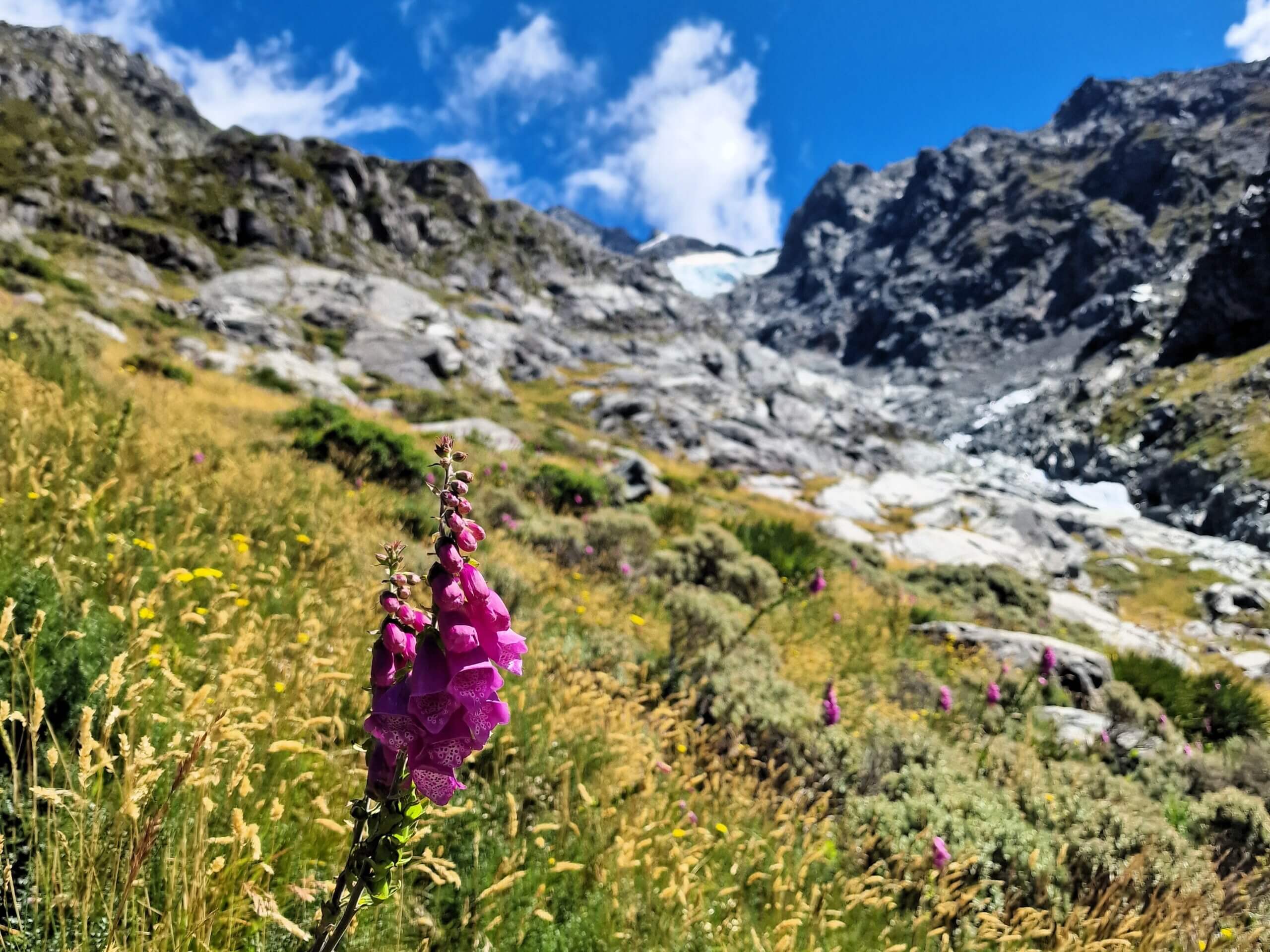
Surviving Sefton Bivvy
But the real kicker? About 80 percent into the track, I hit a section that made me question my entire existence. The path goes straight up, and you’ve got to use your goddamn hands to climb if you want to see it through. Uneasy doesn’t even begin to cover it. I was long ahead of Jakub, and there was no way I was turning back now, so I just went for it.
My heart pounded in my chest, the wind whipped around me, and my hands clung to the rocks, knuckles white. But I made it. “F**k going back down,” I thought, but that was a worry for later.
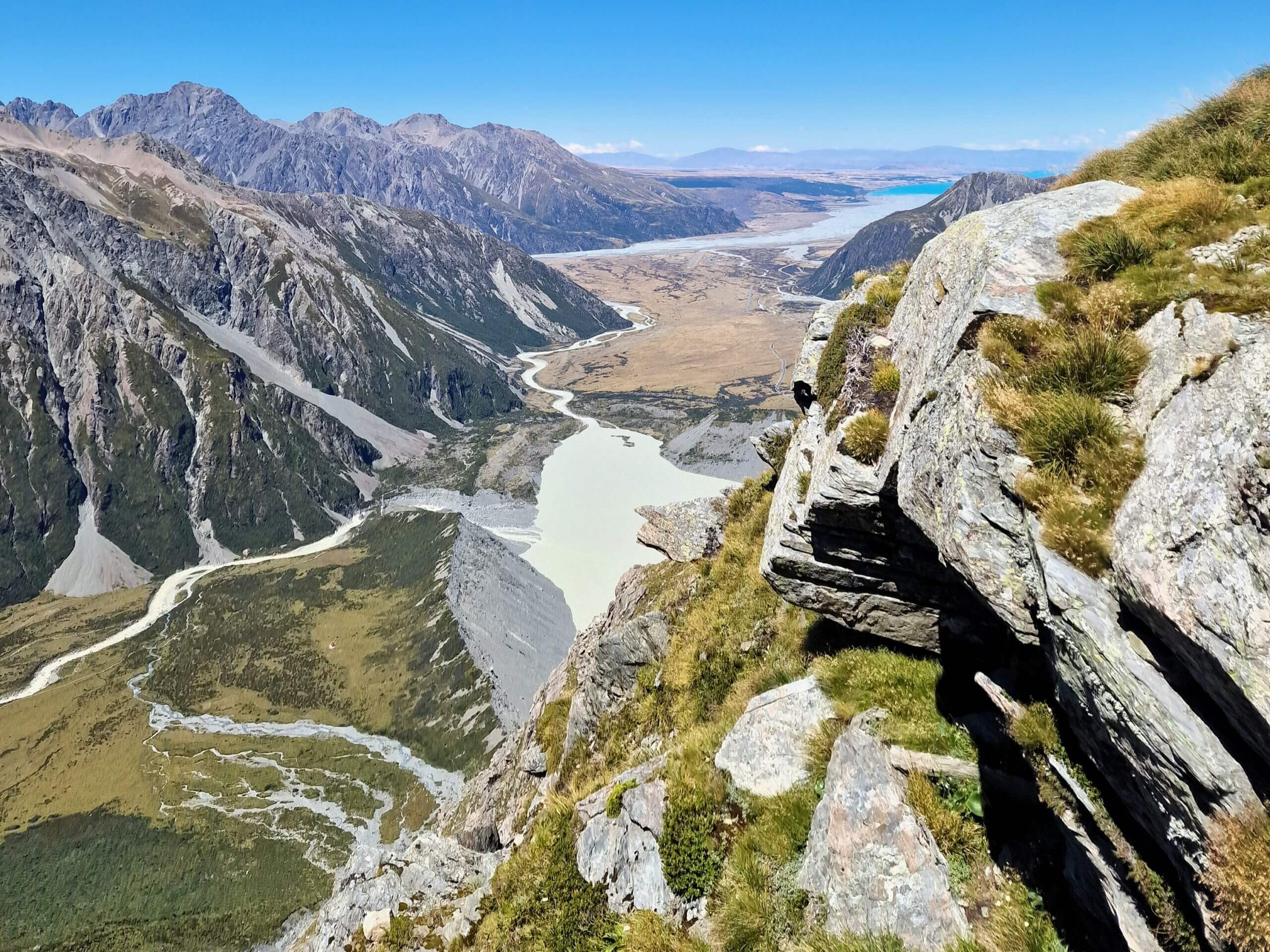
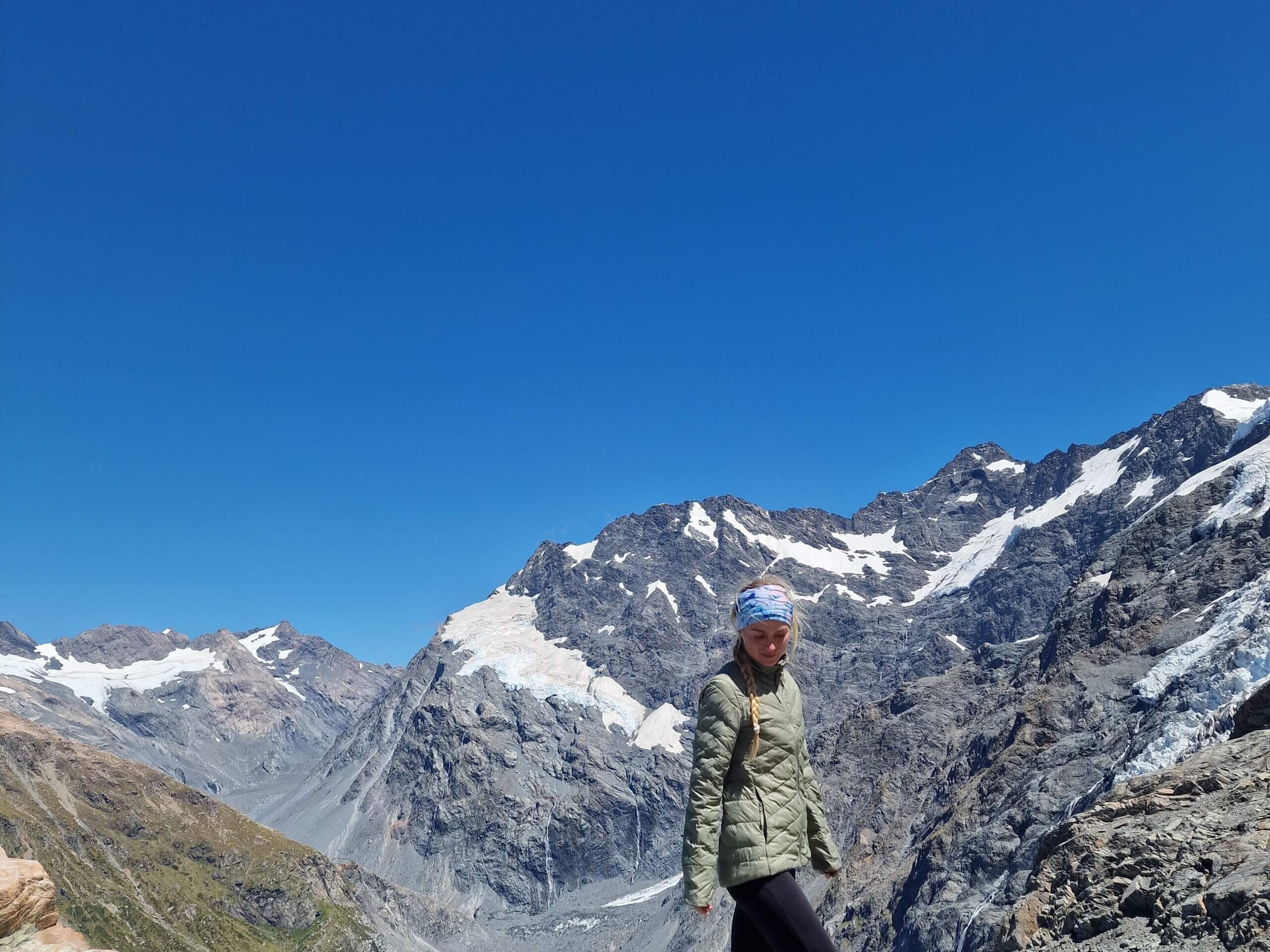
As I pulled myself up from that brutal section, I was met by two kiwis who were also tackling Sefton Bivvy today. “Hi,” I said and smiled, and the lady laughed at how calm and unbothered I seemed while they were out of breath and shaking from nerves.
“I’ll see you at the top,” I said, moving forward. The rest of the track was less intense, more of a walk on some big boulders. And then, there it was in the distance, like a phantom from the mountains—The Sefton Bivouac!
Summit Serenity
Reaching the top of a tough hiking trail is like hitting a personal summit. Standing by Sefton Bivouac, near the towering Te Waewae Glacier, surrounded by alpine grandeur and dizzying drops, I felt both insignificant and exhilaratingly high.
Up there, it was just me, Jakub, and the two Kiwis. We swapped tales, shared lunch, and soaked in the moment like it was the last one on Earth.
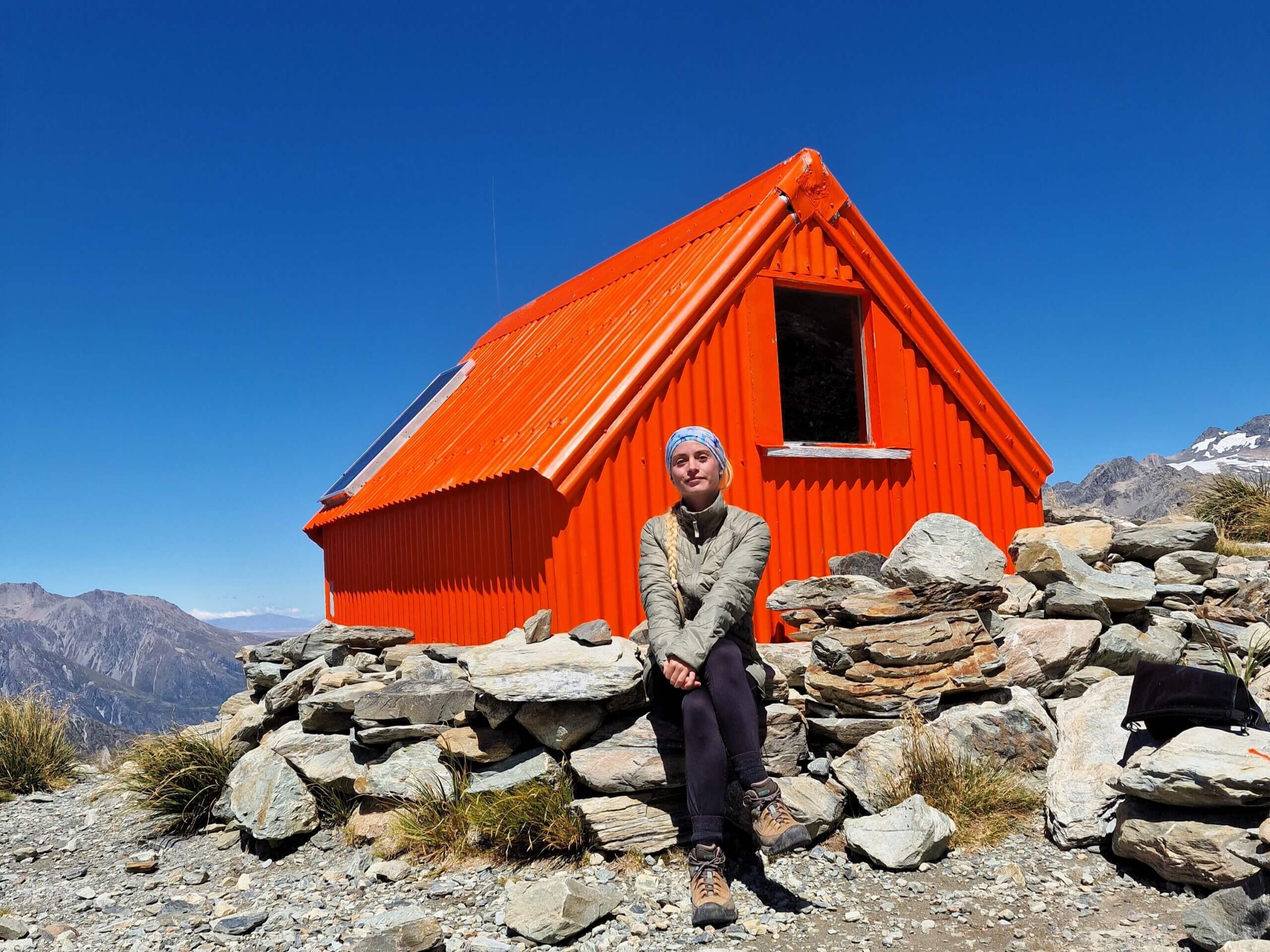
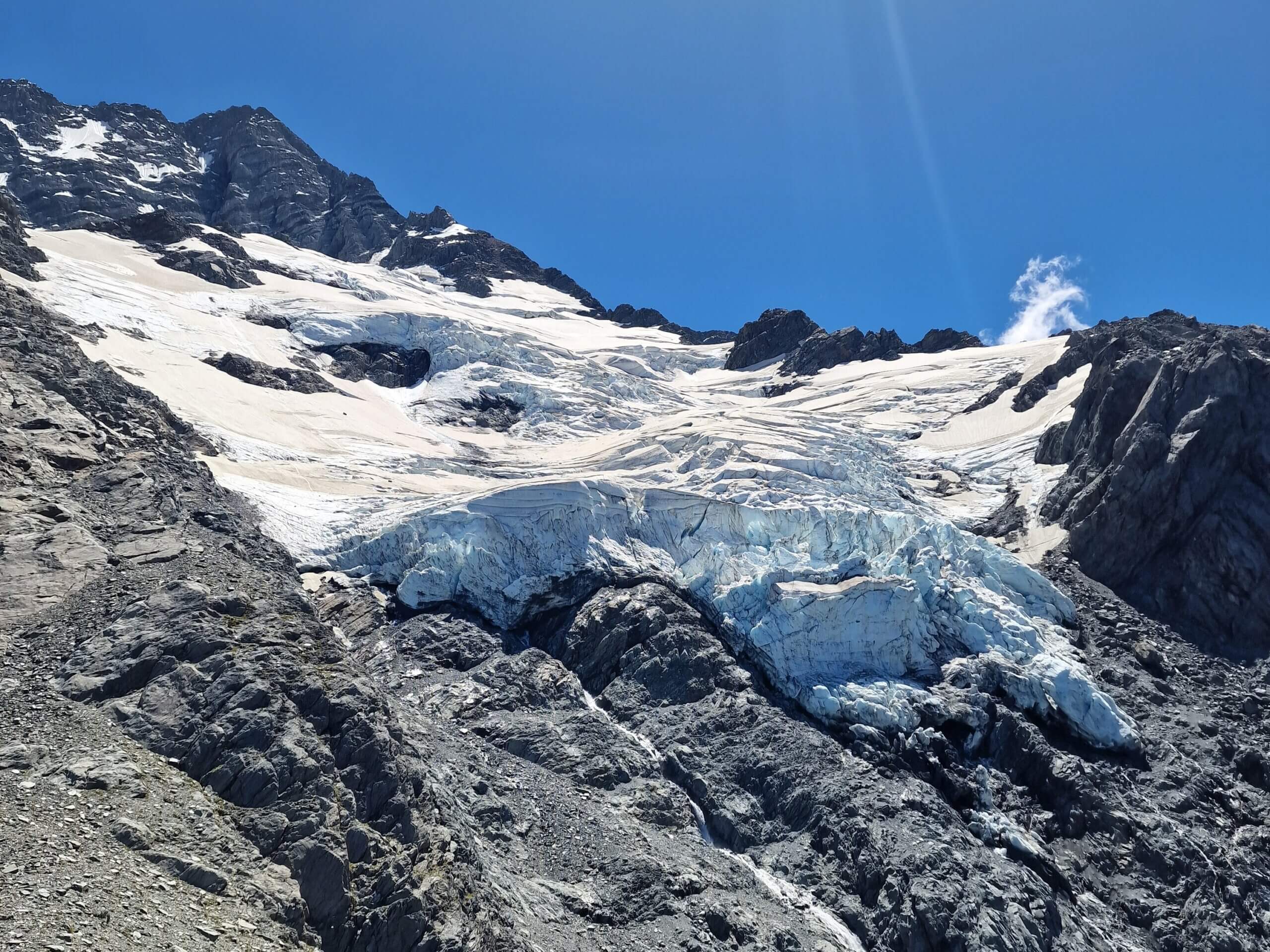
Heading back down was surprisingly smooth. We kept a steady pace, feeling the climb in our muscles, ready for some well-deserved rest and relaxation.
Back at the car park, we swapped sweat-soaked gear for fresh clothes. “I’m so glad you dragged me on this hike!” Jakub grinned, riding the high of post-hike euphoria as we cruised back down Mount Cook Road toward our free camp spot for the night.
Jakub might not be as gung-ho about hiking as I am, and I’m sure he had his moments of doubt on the trail. But damn, I’m thrilled we did it.
Sefton Bivouac now stands out as one of the top hiking adventures of my life—a journey I’ll treasure forever.
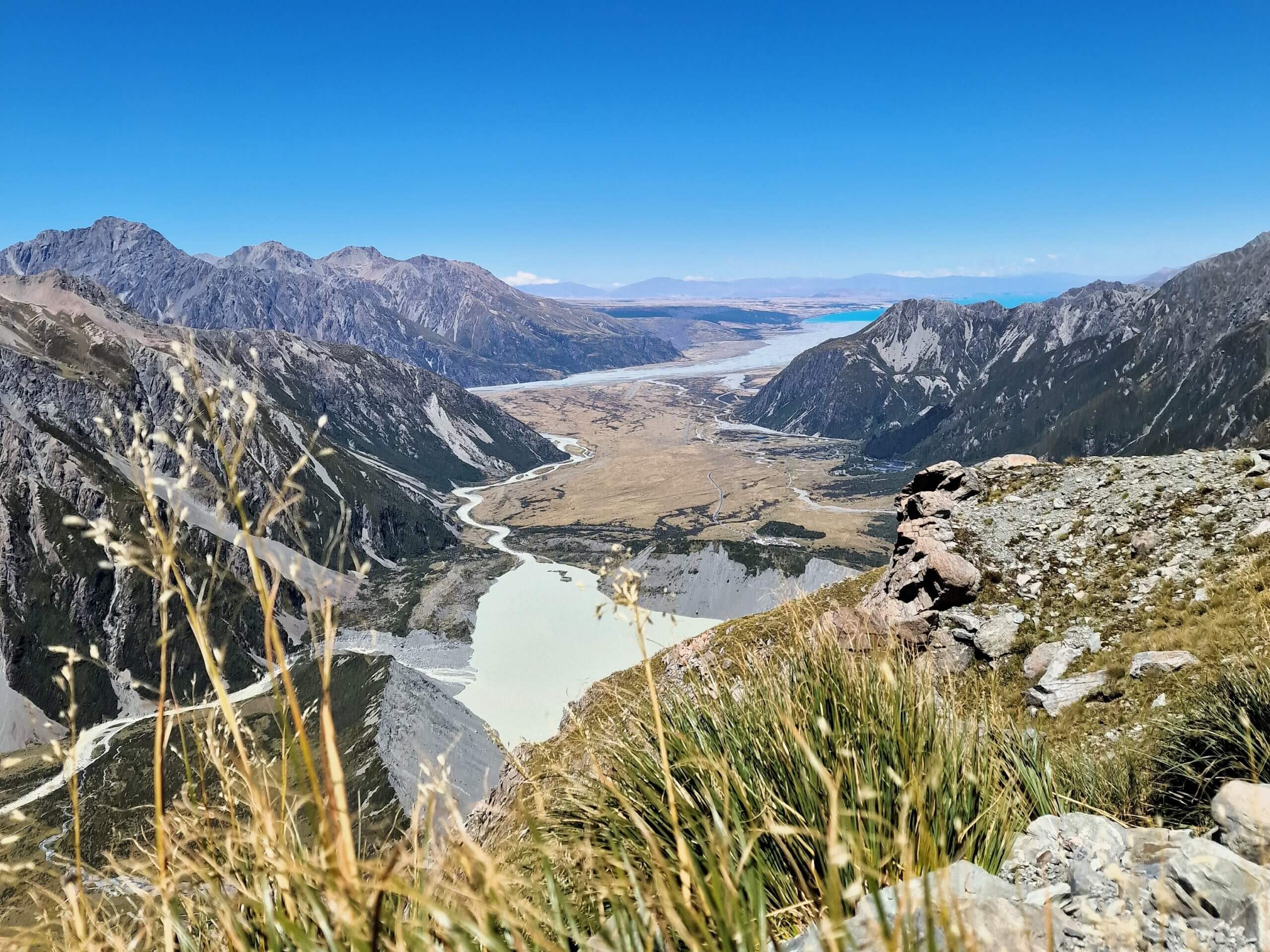

Where to Stay
When planning your hike to Sefton Bivvy and your visit to Aoraki/Mount Cook National Park, you’ll find a range of accommodation options to suit various preferences and budgets. Here are some of the best places to stay, including the experience of overnighting in the Sefton Bivvy itself.
Staying Overnight in the Sefton Bivvy
- Experience: For the adventurous, spending a night in the Sefton Bivouac offers a unique and immersive alpine experience. The bivvy is a basic shelter with minimal facilities, primarily used by climbers.
- Facilities: The hut provides bunks and basic cooking facilities. It is essential to bring your own sleeping bag, food, and warm clothing.
- Booking: No advance booking is required for the Sefton Bivouac, but it operates on a first-come, first-served basis. Be prepared to share the space with fellow hikers and climbers.
Staying Overnight at the Mount Cook Campground
- Location: White Horse Hill Campground, near the start of the Sefton Bivouac Track.
- Facilities: The campground offers tent sites, campervan spaces, and basic amenities, including toilets, picnic tables, and cooking shelters. It’s an excellent base for exploring the park.
- Booking: Reservations are recommended during the peak season (November to April) and can be made through the Department of Conservation (DOC) website.
Staying Overnight at Another Nearby Campground
- Glentanner Park Centre:
- Location: Approximately 20 kilometers from Mount Cook Village.
- Facilities: This campground offers powered and non-powered sites, cabins, and a range of amenities, including a kitchen, lounge area, and laundry facilities.
- Booking: Reservations can be made through the Glentanner Park Centre website or booking.com.
Different Accommodations on Booking.com
- Aoraki Court Motel:
- Description: Located in Mount Cook Village, Aoraki Court Motel offers modern, self-contained units with stunning views of Mount Sefton and Aoraki/Mount Cook.
- Facilities: Units include kitchenettes, free Wi-Fi, and parking. It’s a comfortable option for families and couples.
- The Hermitage Hotel:
- Description: A historic hotel with a range of accommodation options, from premium hotel rooms to budget-friendly chalets.
- Facilities: On-site restaurants, a bar, a museum, and activity booking services. The Hermitage is an iconic place to stay, offering a mix of luxury and convenience.
- Mt Cook Lodge and Motels:
- Description: Situated within Mount Cook Village, this lodge offers a variety of accommodations, including motel units and dormitory-style rooms.
- Facilities: On-site restaurant and bar, guest kitchen, and laundry facilities. It’s a good option for both solo travelers and groups.
- YHA Aoraki/Mount Cook:
- Description: A budget-friendly hostel offering private rooms and shared dormitories.
- Facilities: Shared kitchen, lounge area, and free Wi-Fi. Ideal for backpackers and budget-conscious travelers.
Tips for Booking
- Peak Season: The peak season runs from November to April. Book your accommodation well in advance to secure your preferred option.
- Weather Considerations: Be prepared for rapidly changing weather conditions, especially if staying in more remote or basic accommodations like the Sefton Bivvy.
- Local Amenities: Mount Cook Village has limited amenities, so plan accordingly and consider bringing necessary supplies with you.
Whether you choose the rustic charm of the Sefton Bivvy, the convenience of nearby campgrounds, or the comfort of local hotels and motels, you’ll find plenty of options to enhance your adventure in Aoraki/Mount Cook National Park.
FAQ
Visiting New Zealand
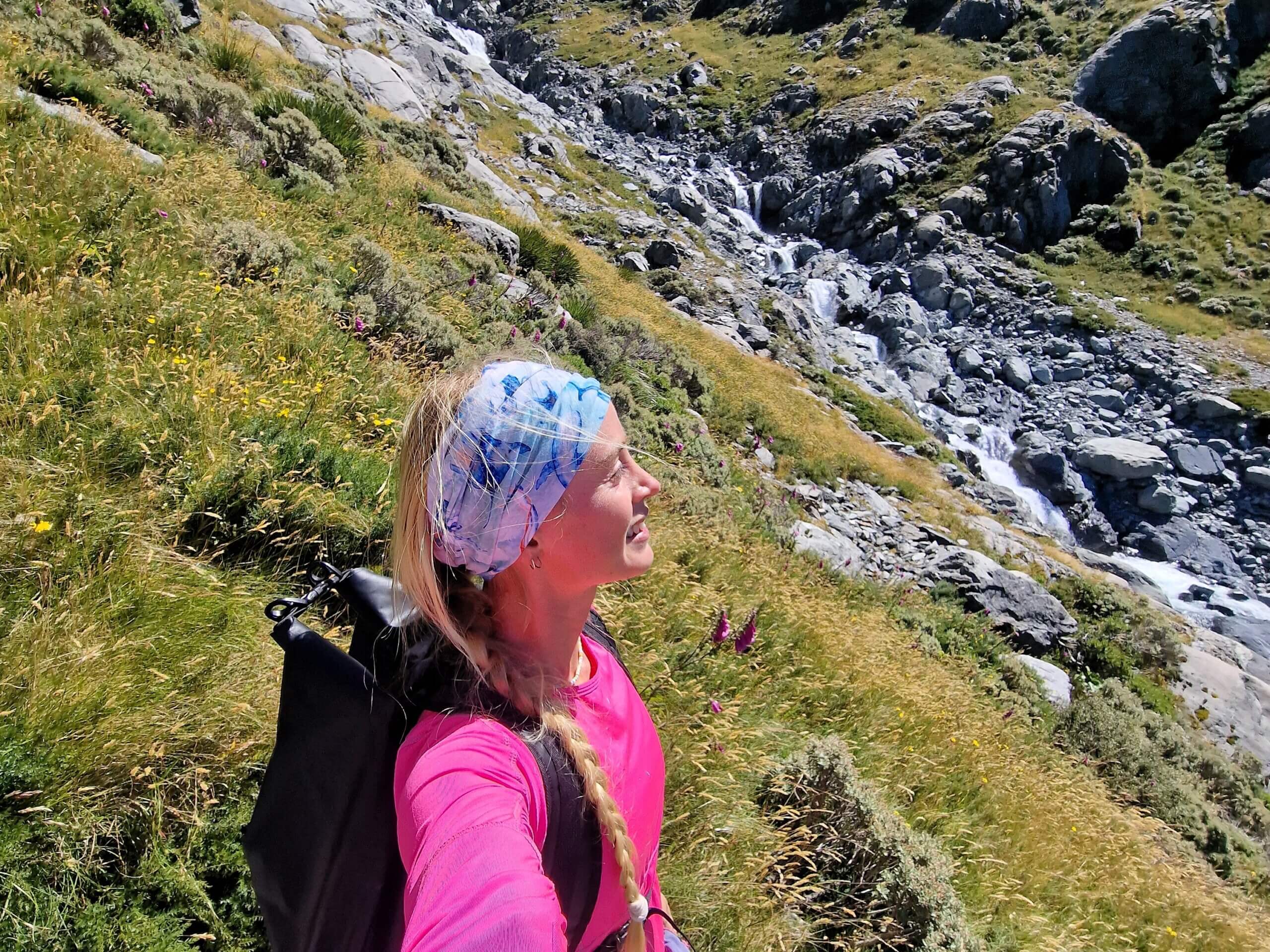
What is the best time of year to visit New Zealand? The best time to visit New Zealand depends on your activities and preferences. For hiking and outdoor activities, the summer months (December to February) offer warm weather and longer daylight hours. The shoulder seasons (spring: September to November, and autumn: March to May) are also great for outdoor activities with fewer crowds and mild weather.
Do I need a visa to visit New Zealand? Visa requirements vary depending on your nationality. Many visitors from visa-waiver countries can stay in New Zealand for up to 90 days without a visa, but they need to obtain an NZeTA (New Zealand Electronic Travel Authority) before arrival. Check the New Zealand immigration website for specific requirements.
What currency is used in New Zealand, and can I use credit cards? New Zealand uses the New Zealand Dollar (NZD). Credit cards are widely accepted, especially Visa and MasterCard. It is advisable to carry some cash for smaller establishments or remote areas.
What are some cultural norms I should be aware of in New Zealand? New Zealanders (Kiwis) are friendly and informal. Respect for the environment is important, so practice “Leave No Trace” principles. Also, be mindful of Maori culture and traditions, showing respect for sacred sites and customs.
Visiting Aoraki/Mount Cook National Park
What is the best time to visit Aoraki/Mount Cook National Park? The best time to visit is during the warmer months, from late spring to early autumn (November to April). During this period, the weather is more stable, and most hiking tracks are accessible.
Are there any entrance fees for Aoraki/Mount Cook National Park? No, there are no entrance fees for Aoraki/Mount Cook National Park. However, some facilities and guided activities may have associated costs.
What facilities are available at Mount Cook Village? Mount Cook Village offers accommodation options, a visitor center, a few restaurants, and basic amenities such as a small grocery store. It is the main hub for exploring the national park.
Is it possible to see Aoraki/Mount Cook without hiking? Yes, there are several viewpoints and short walks that offer stunning views of Aoraki/Mount Cook without requiring extensive hiking. The Hooker Valley Track and the Tasman Glacier View Track are popular choices for easier walks.
Hiking in New Zealand
What are the essential items I should bring for hiking in New Zealand? Essential items include sturdy hiking boots, layered clothing, a waterproof jacket, a hat and sunscreen, a map and compass or GPS device, plenty of water, high-energy snacks, a first aid kit, and a personal locator beacon (PLB) for remote hikes.
Are there any safety precautions I should take while hiking in New Zealand? Yes, always check the weather forecast before starting your hike, as conditions can change rapidly. Inform someone of your plans and expected return time. Stay on marked trails, carry adequate supplies, and be prepared for emergencies.
Do I need to book huts in advance for multi-day hikes? For popular multi-day hikes, such as the Great Walks, it is highly recommended to book huts and campsites in advance, especially during the peak season. Bookings can be made through the Department of Conservation (DOC) website.
Can I hike in New Zealand during the winter months? Winter hiking is possible but requires more preparation and caution. Trails may be covered in snow and ice, and weather conditions can be harsh. Specialized equipment such as crampons and ice axes may be necessary, and it is best to have experience in alpine conditions or go with a guided group.
Are there guided hiking tours available in Aoraki/Mount Cook National Park? Yes, there are guided hiking tours available for various trails and activities within the park. These tours can provide valuable insights, enhance safety, and offer a richer experience of the park’s natural and cultural history.
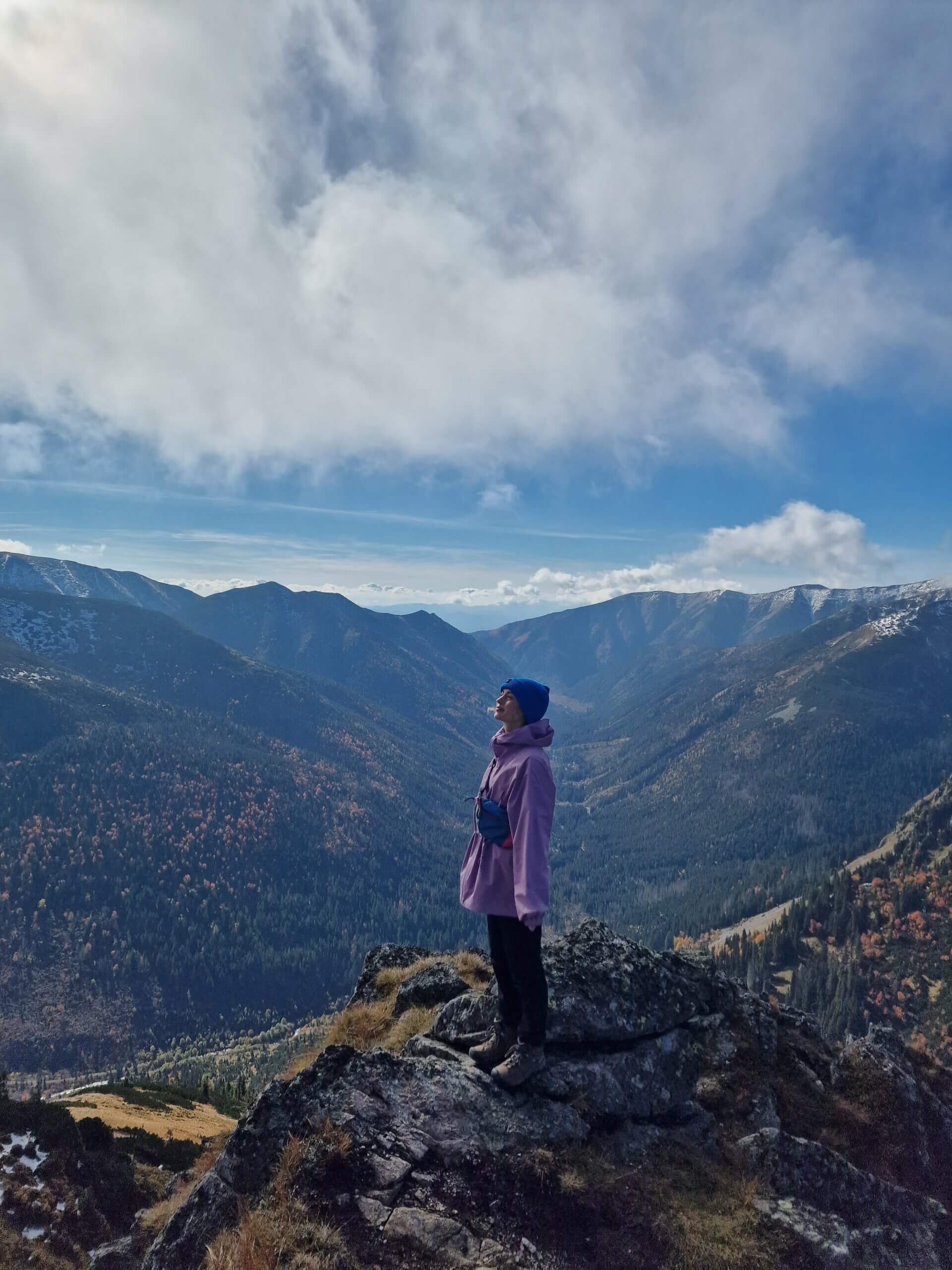
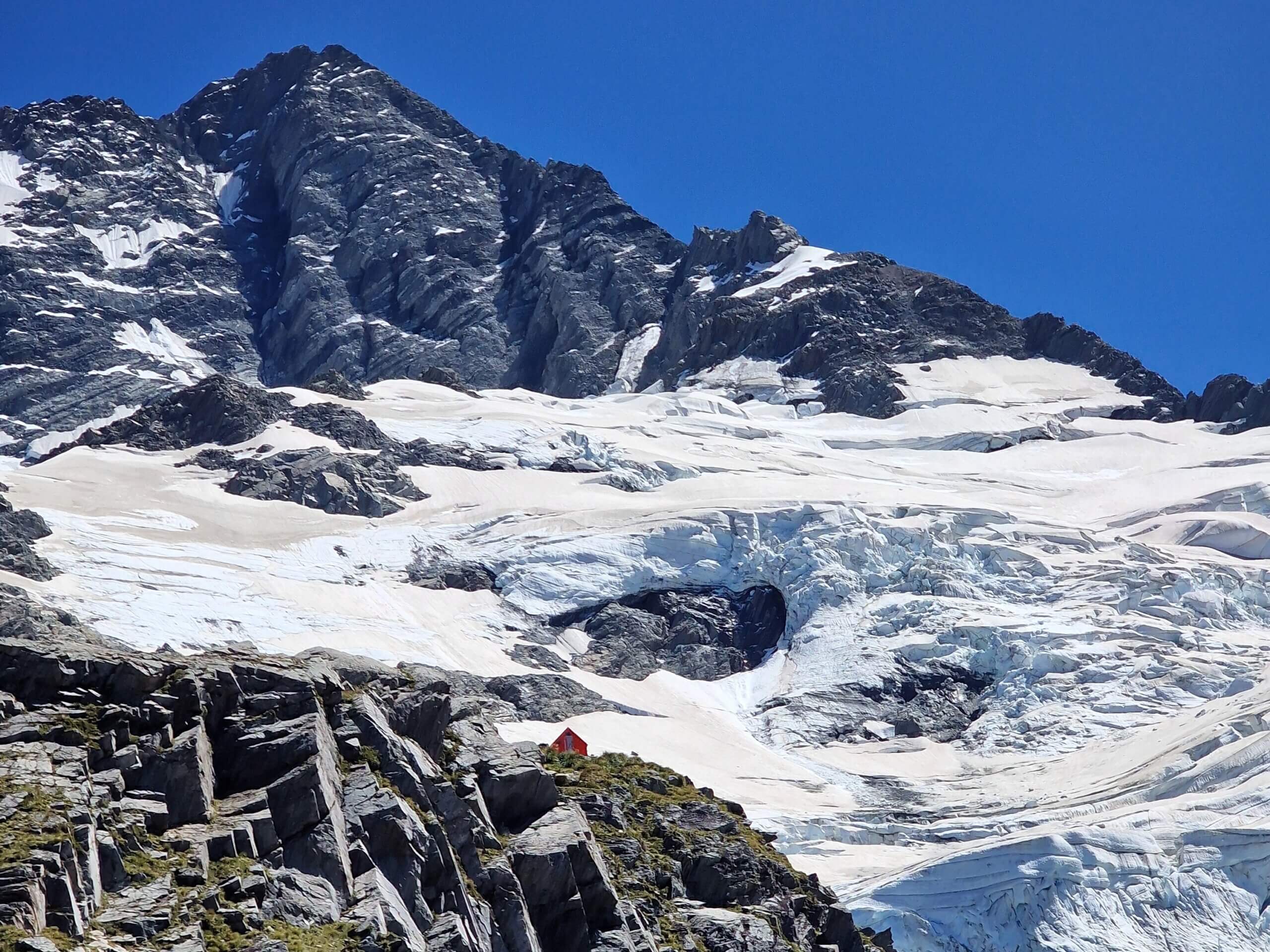

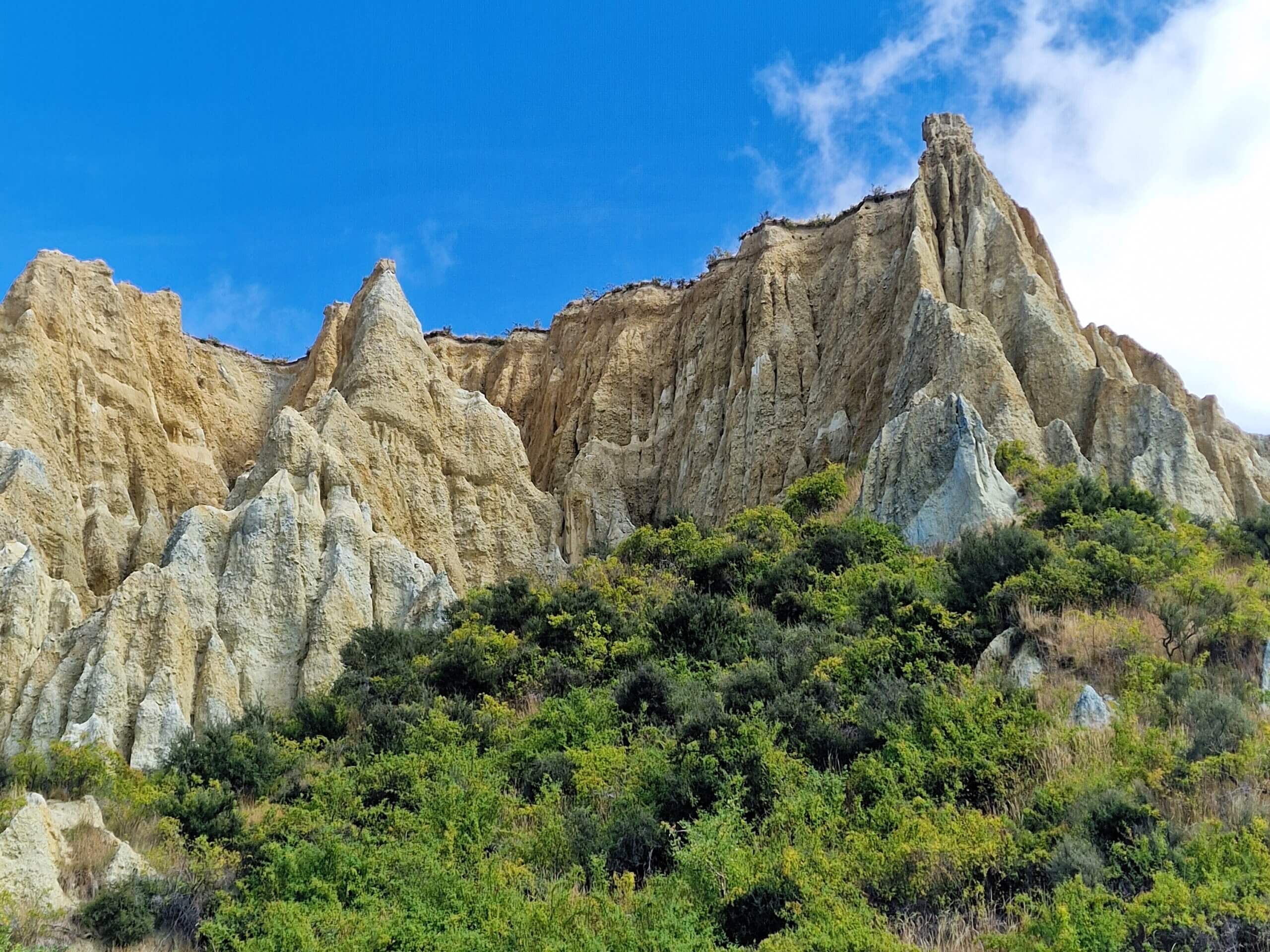
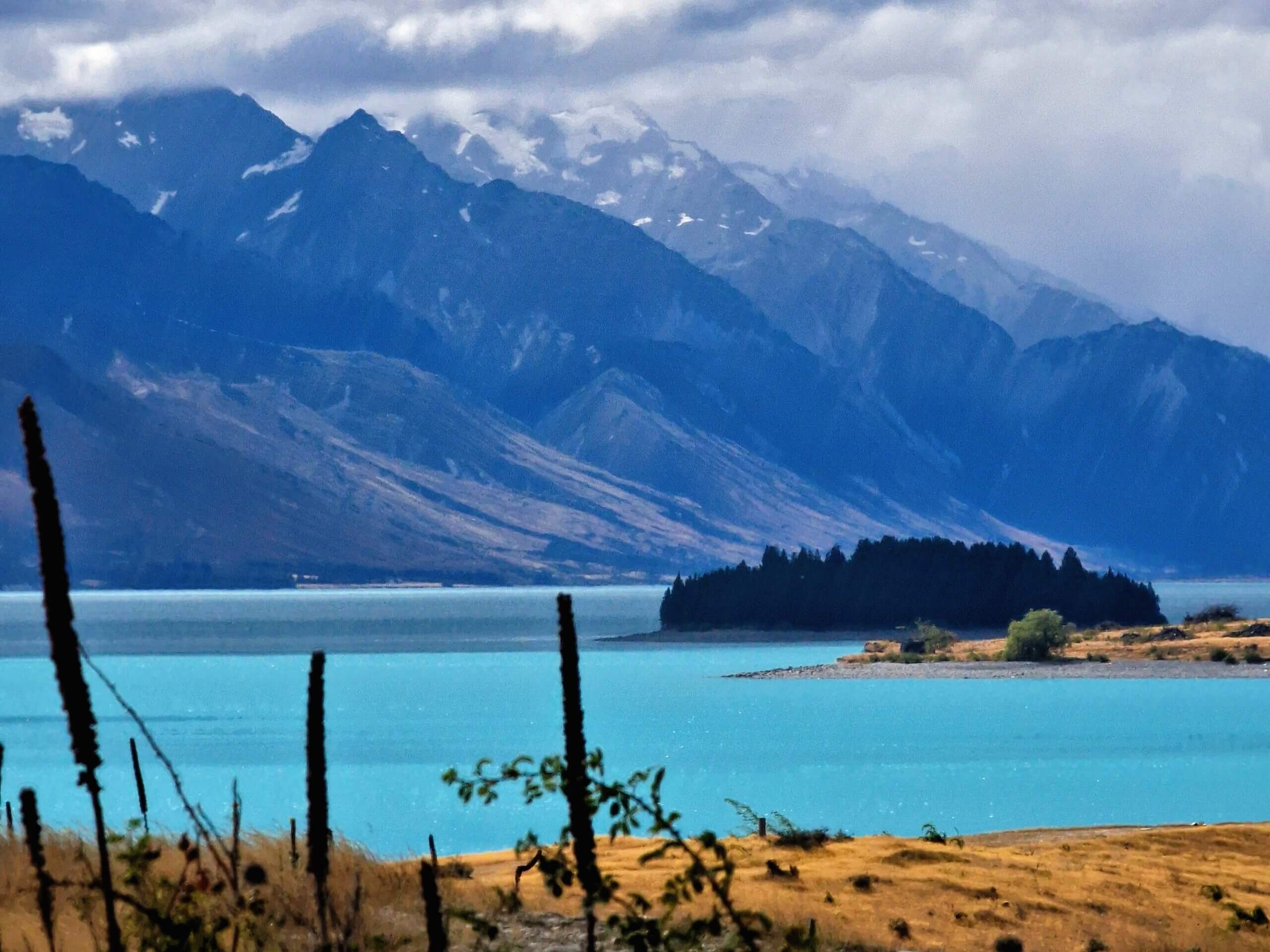
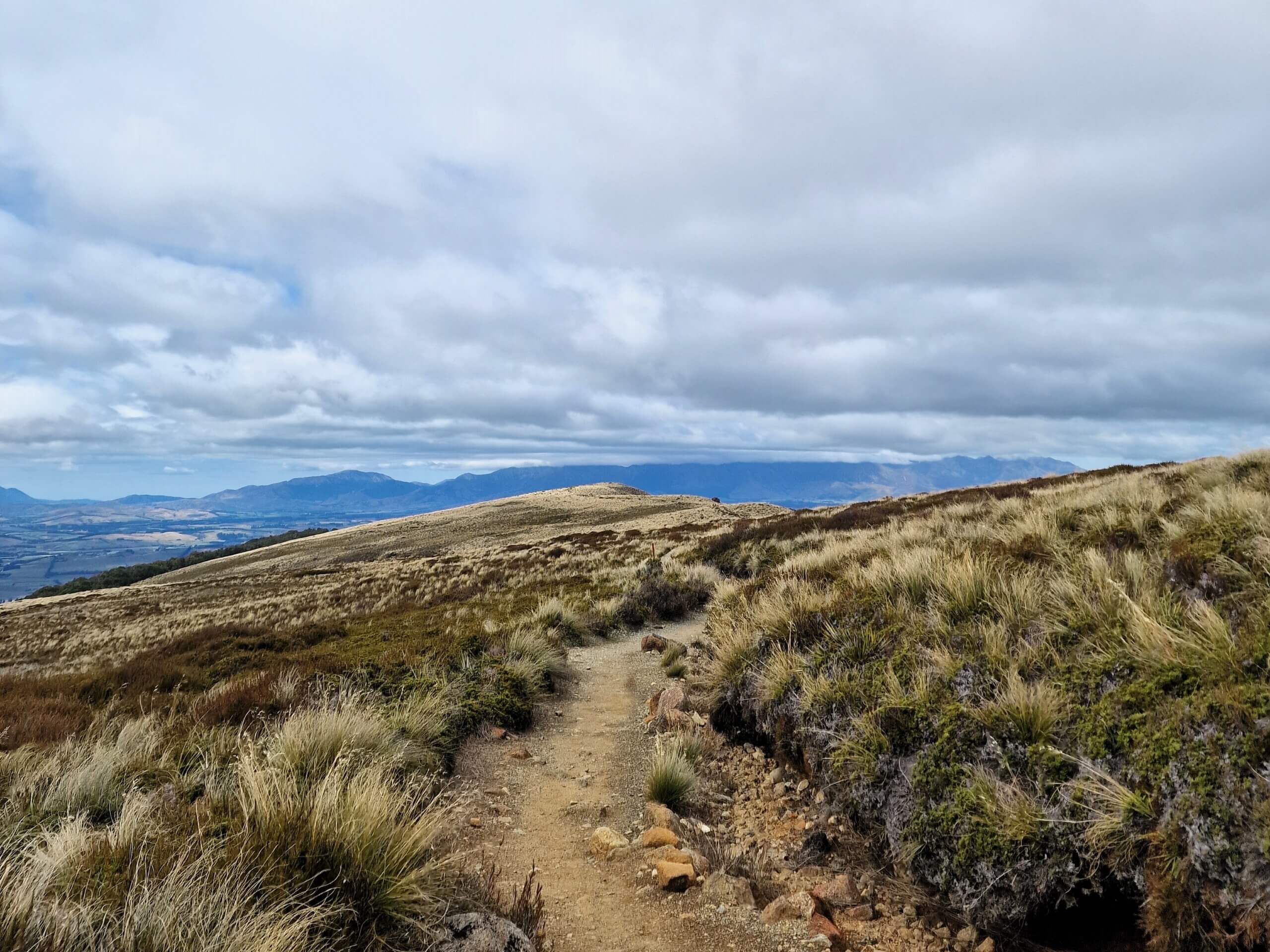
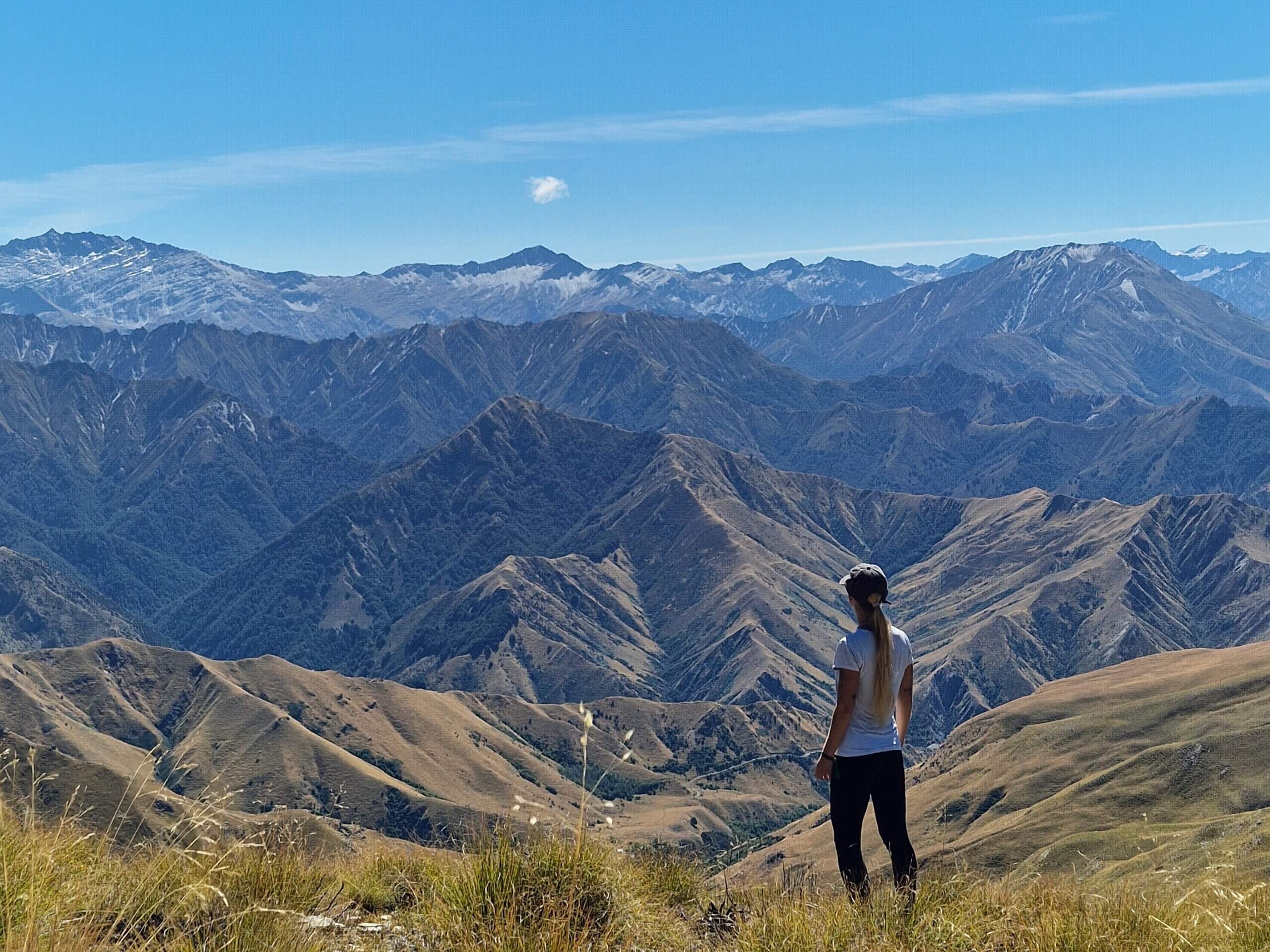
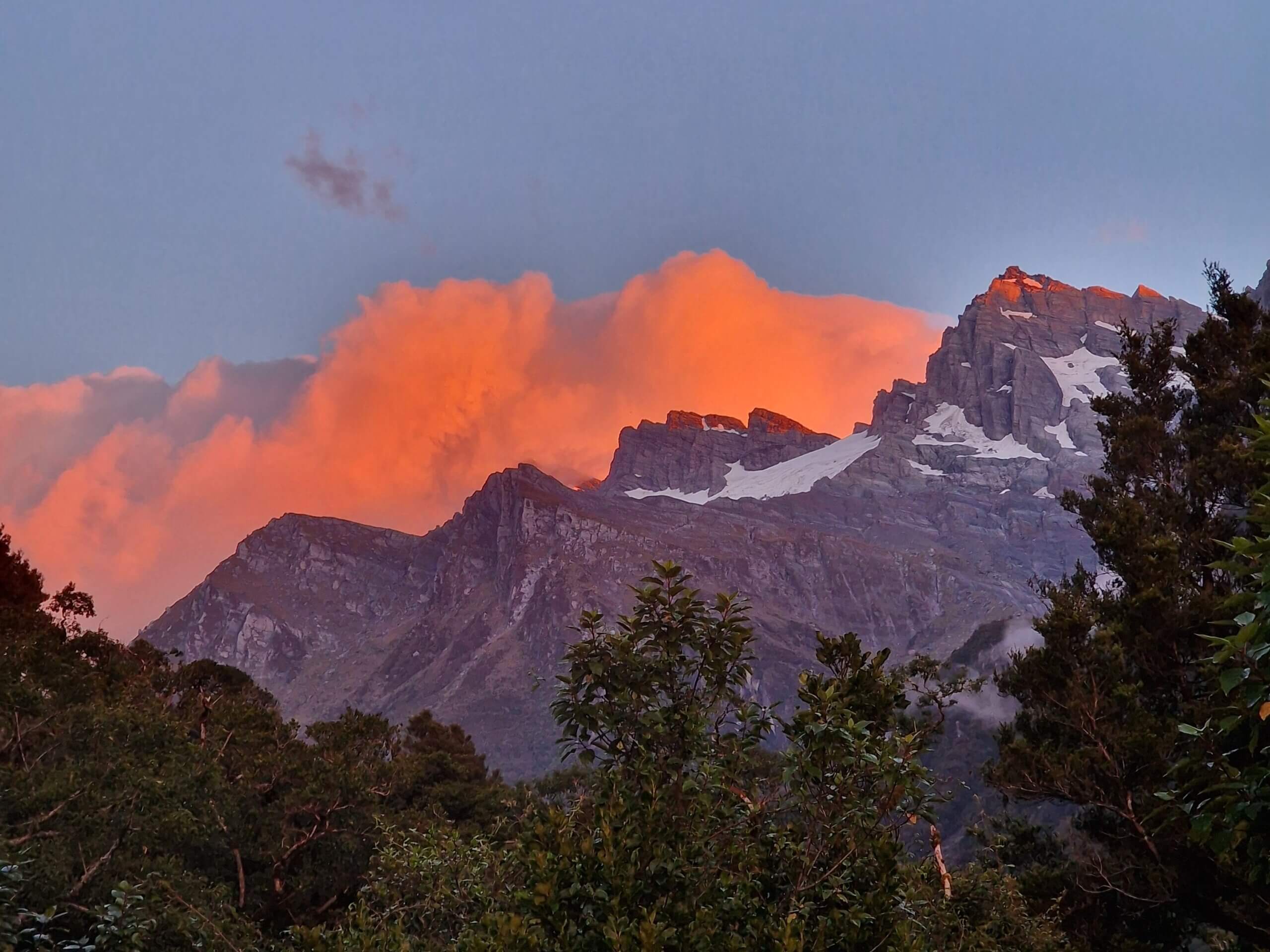
Leave a Reply